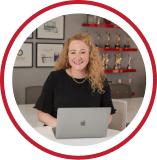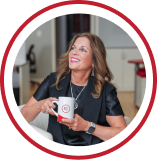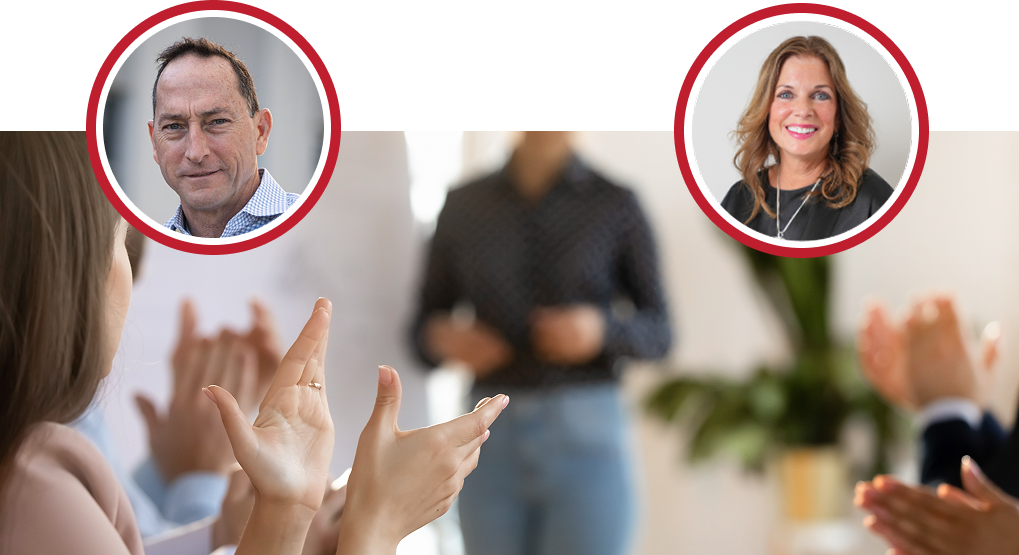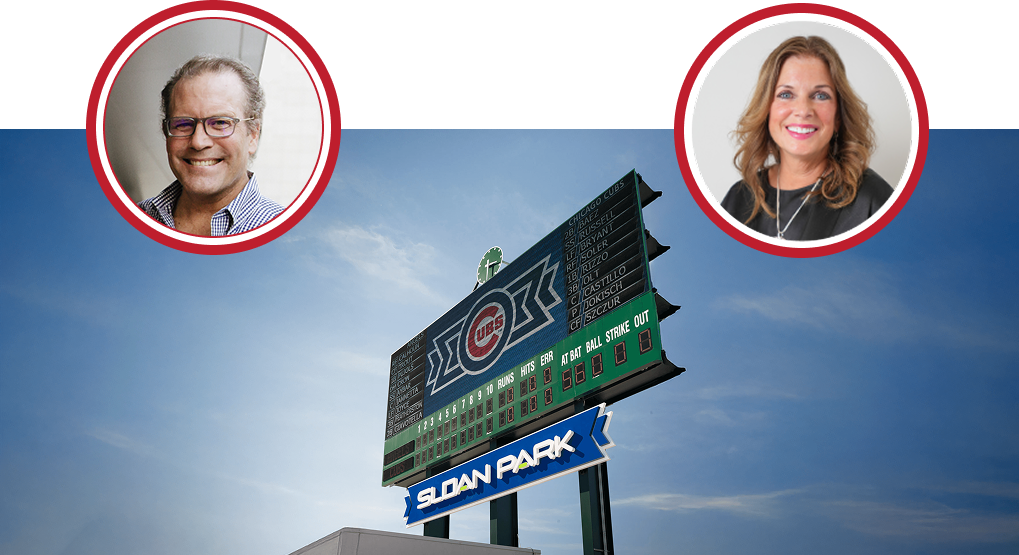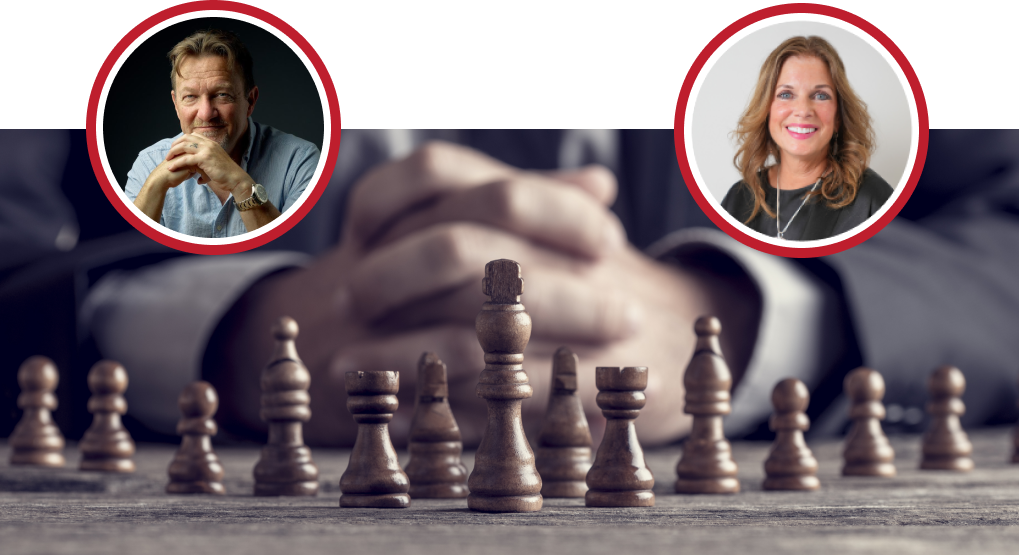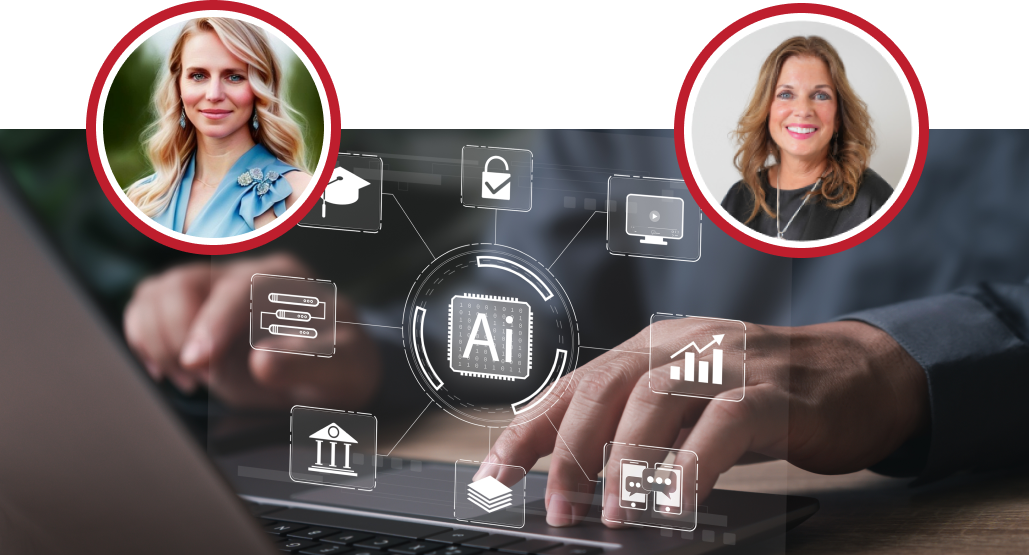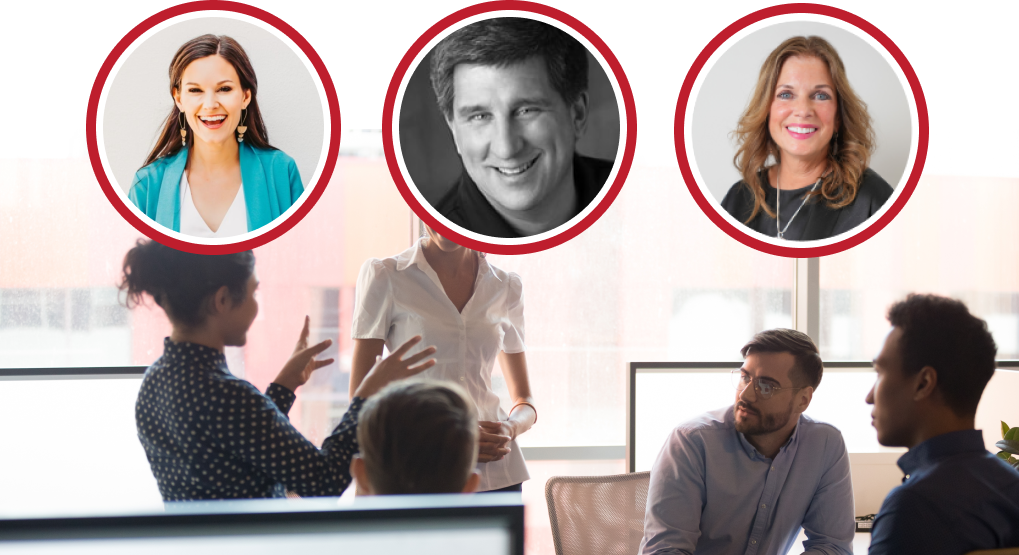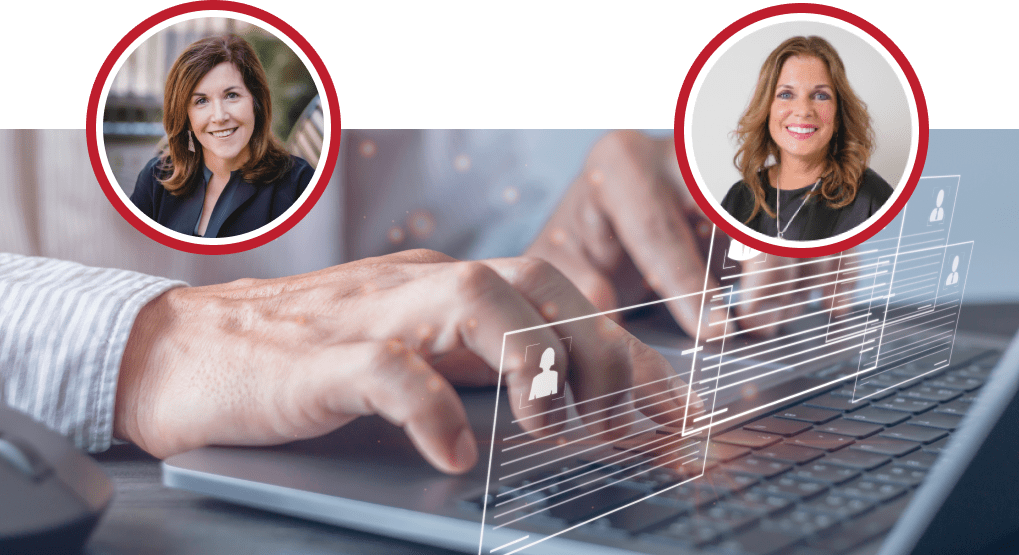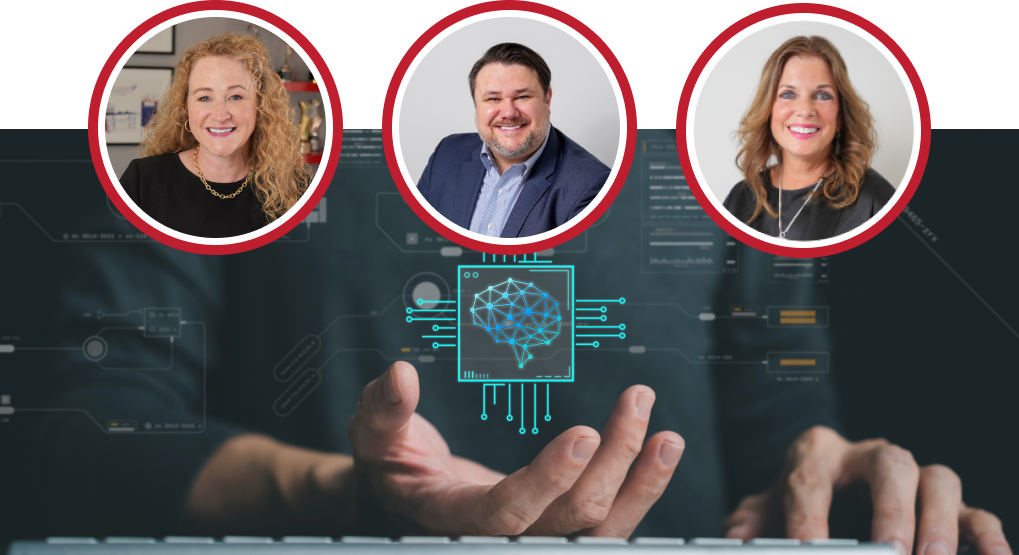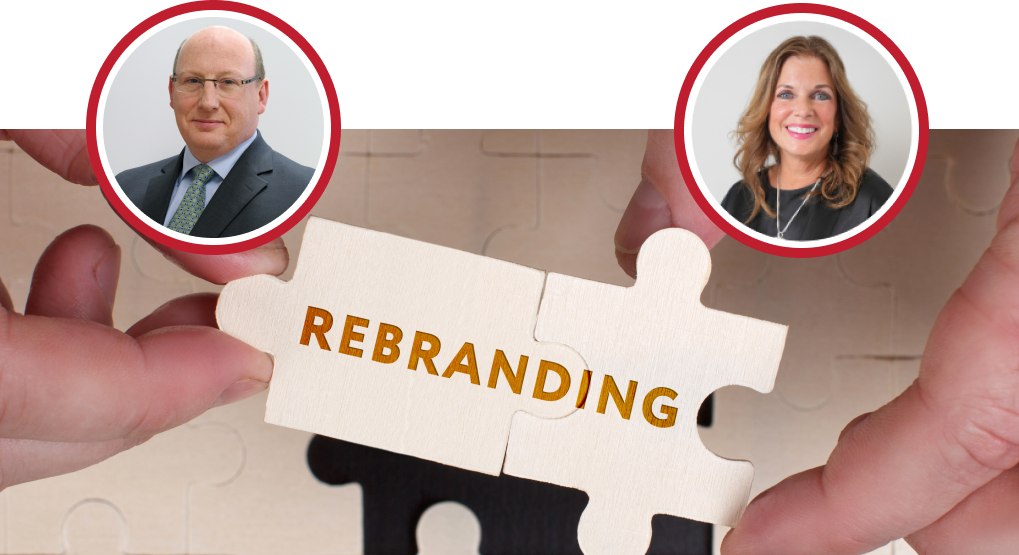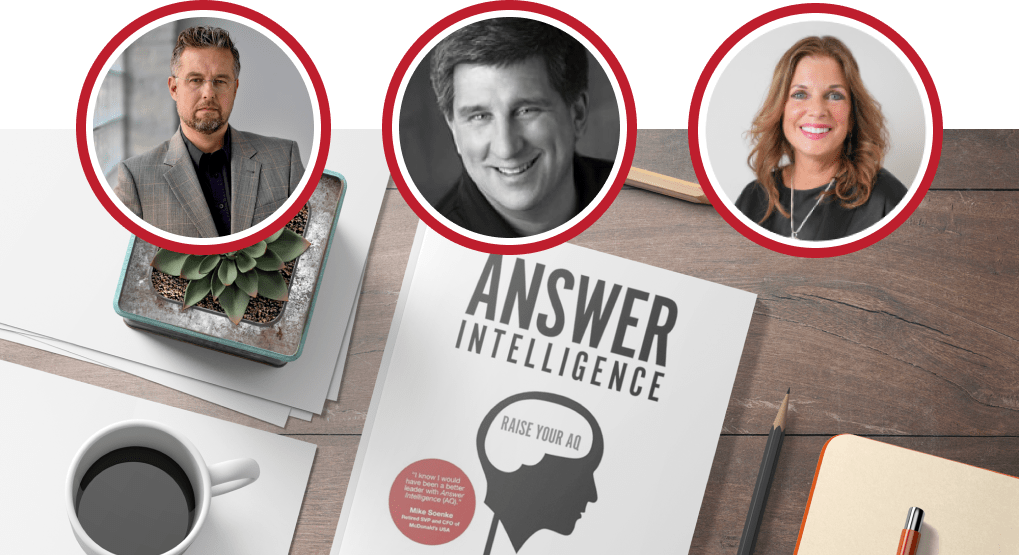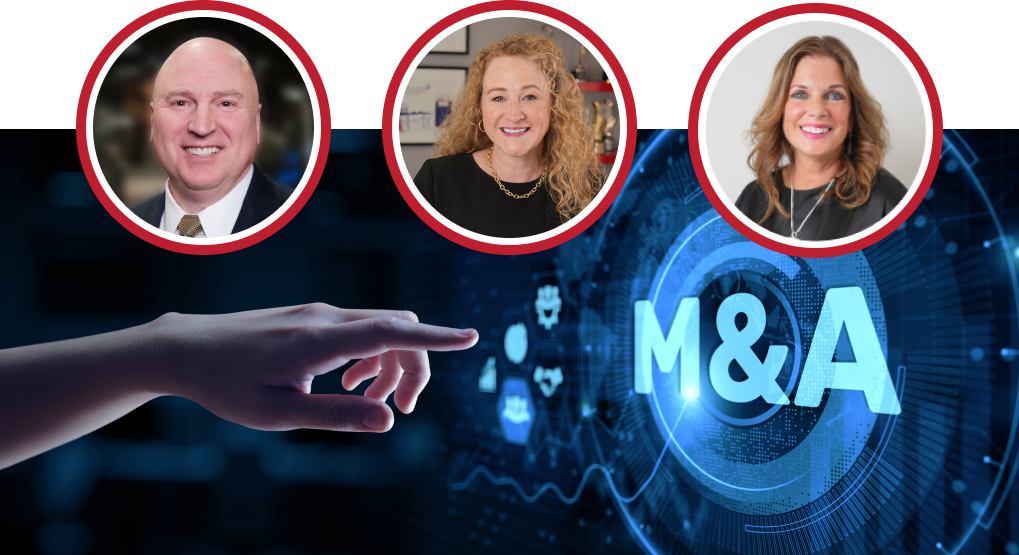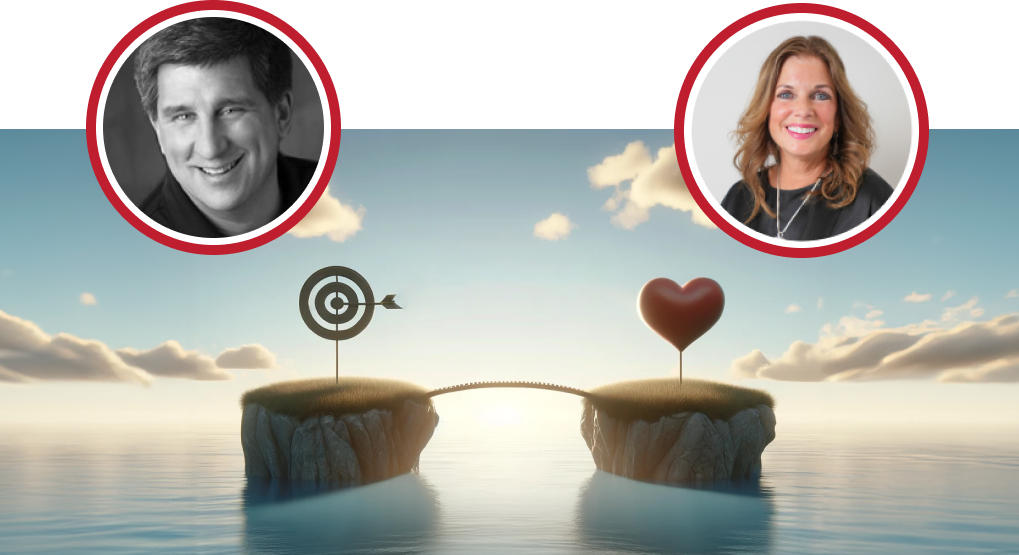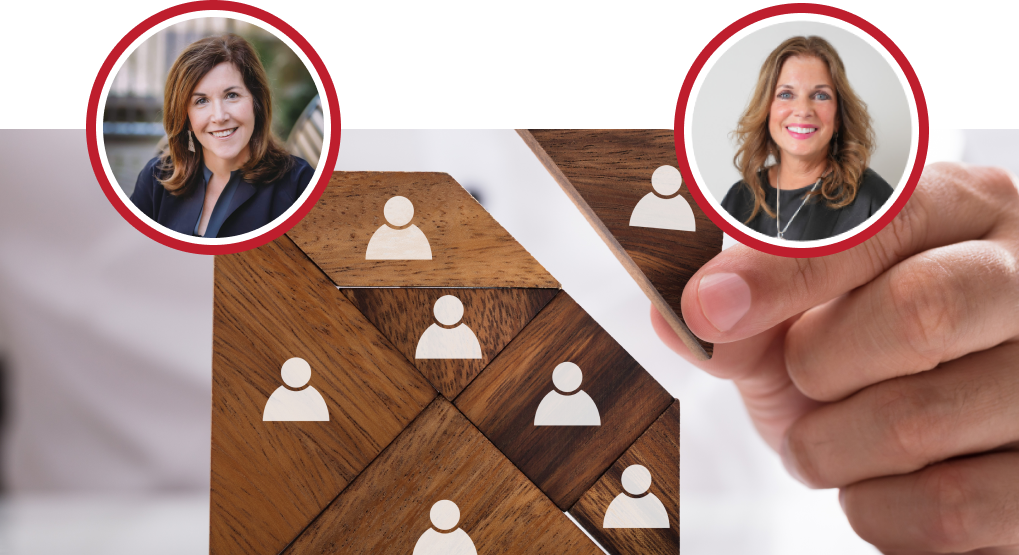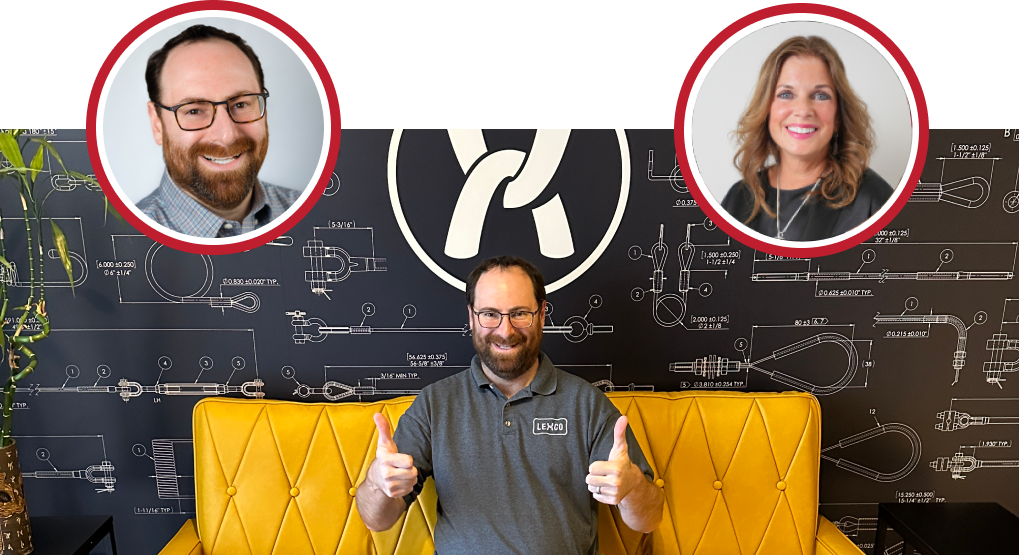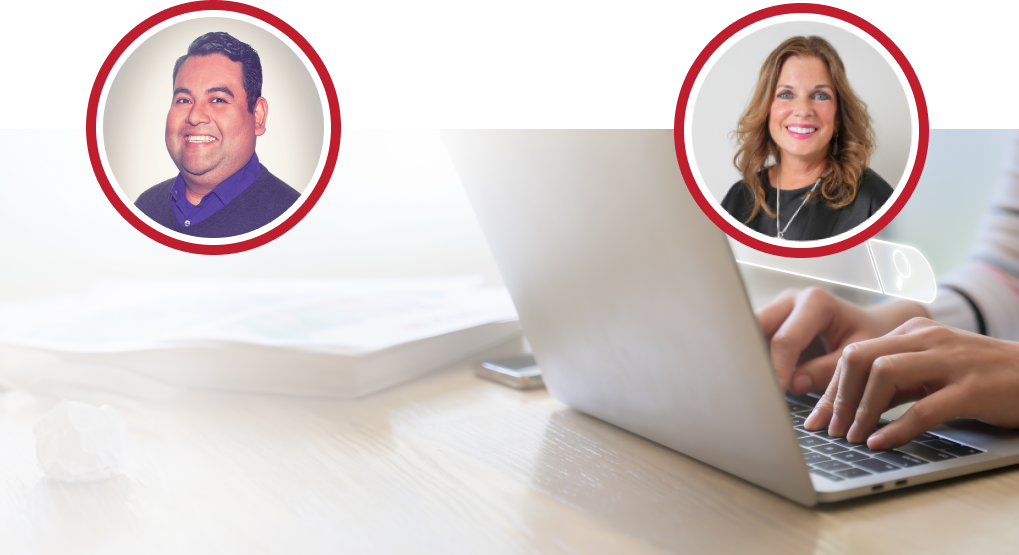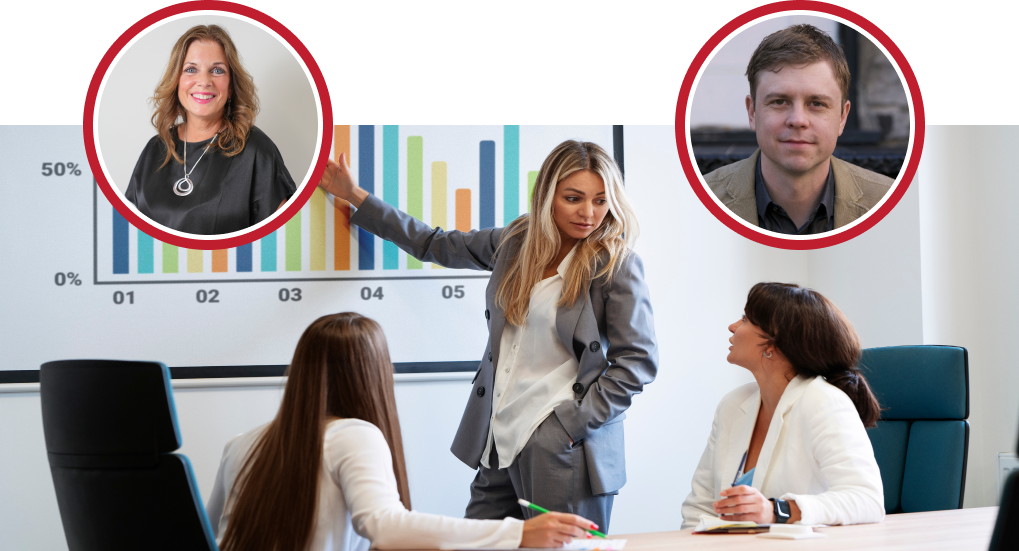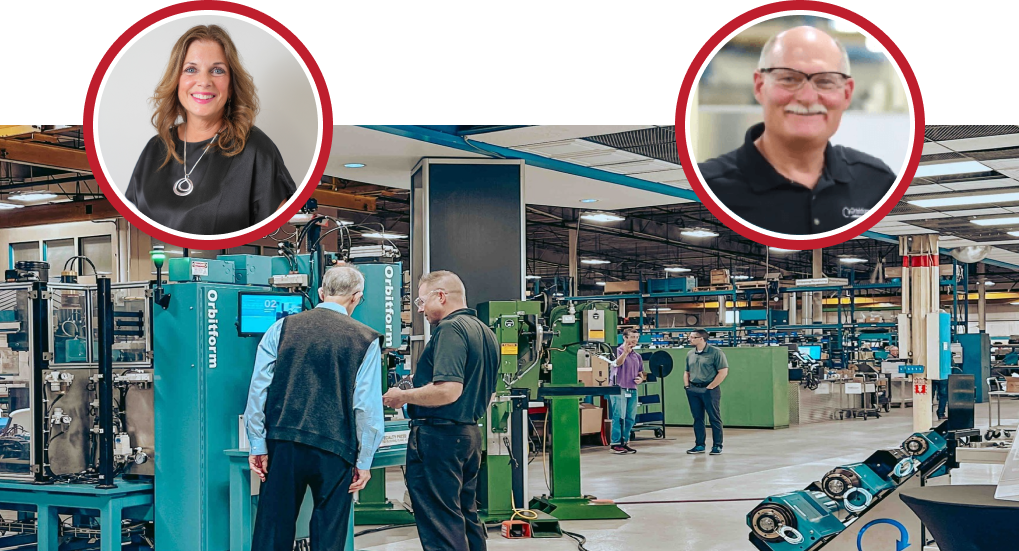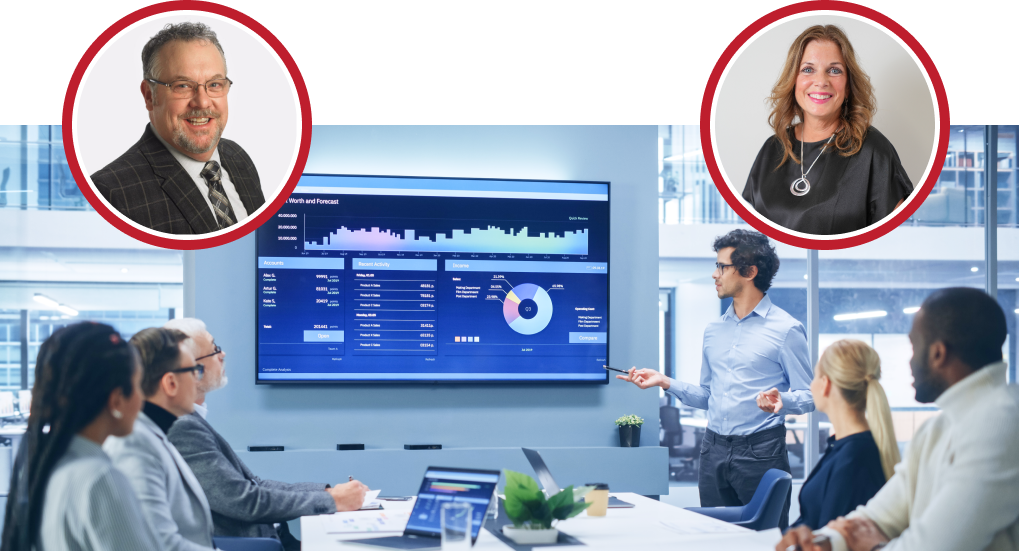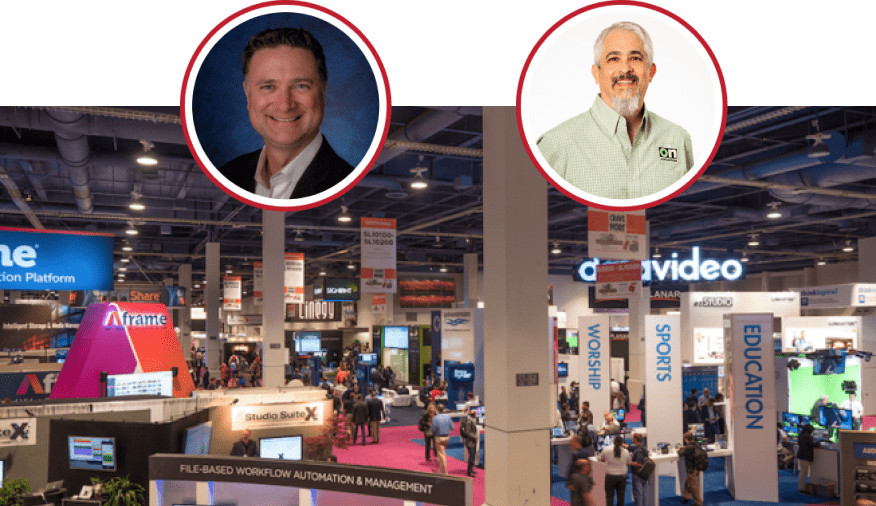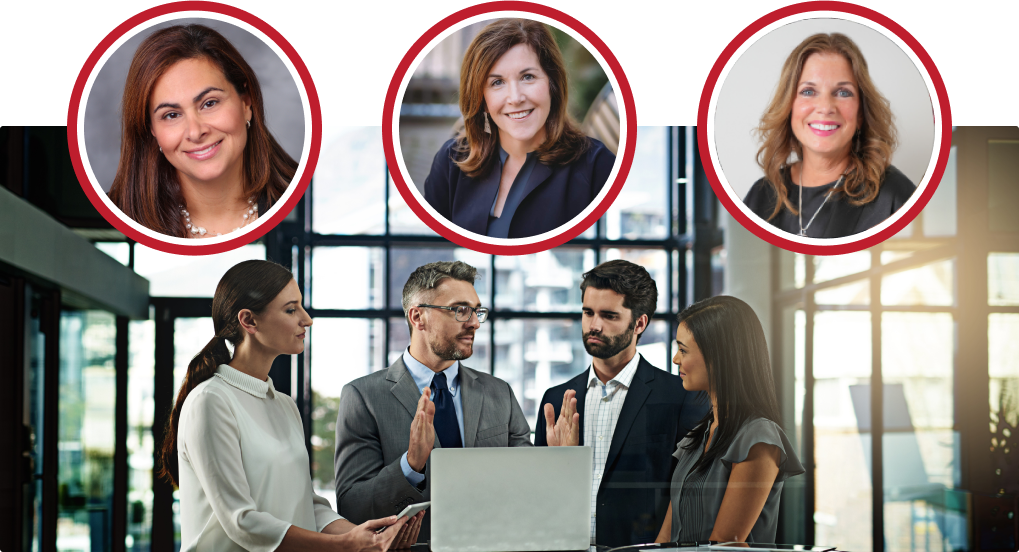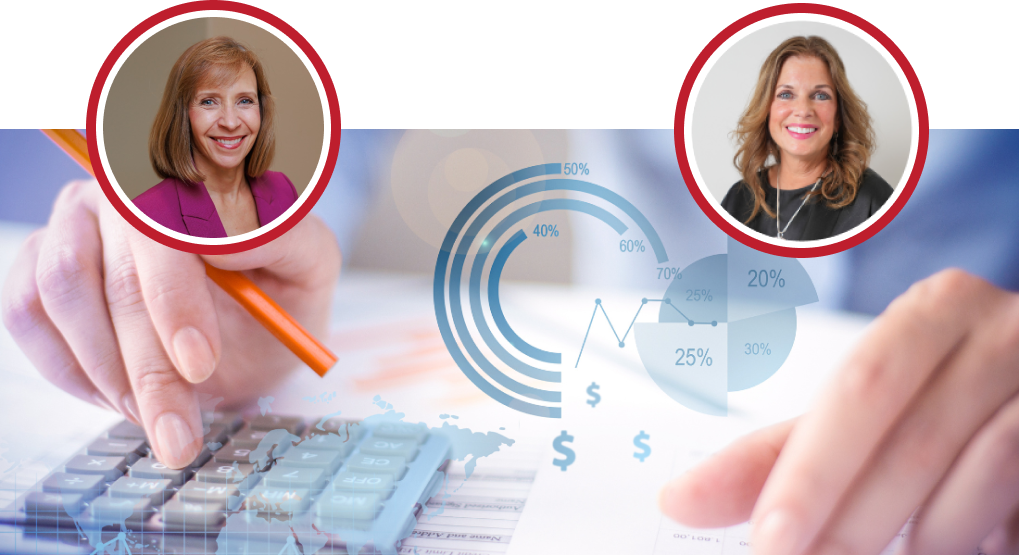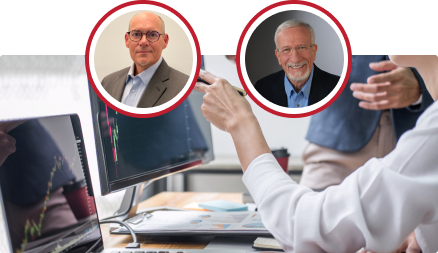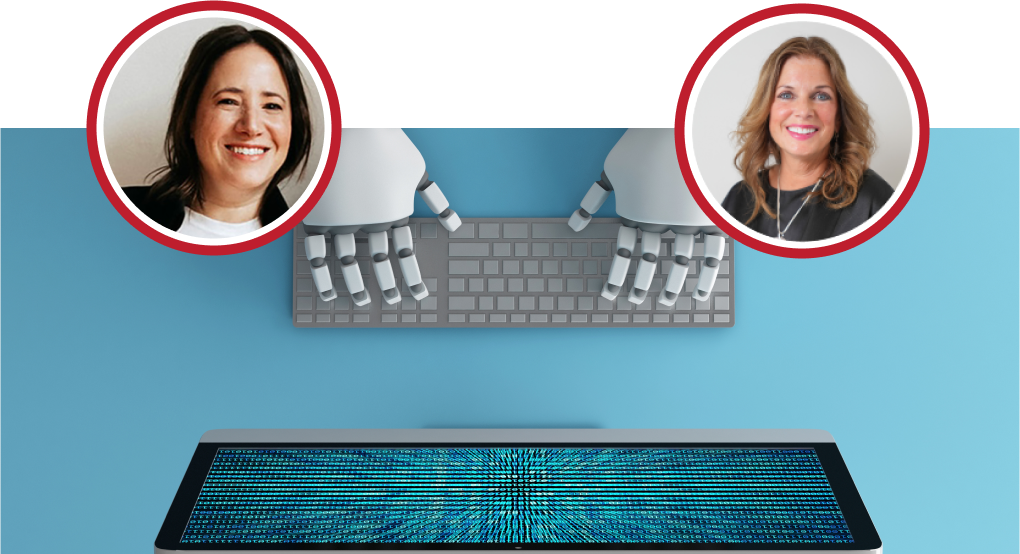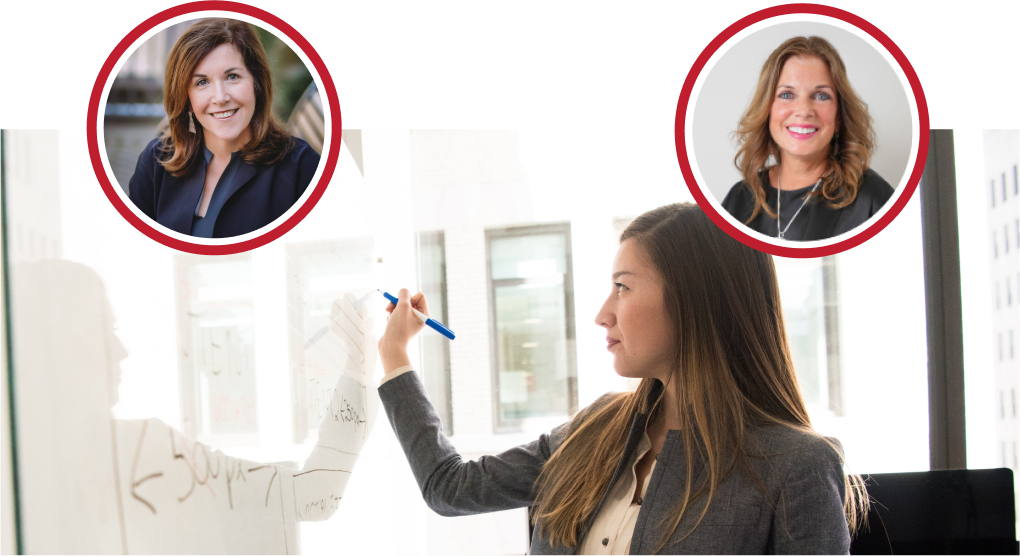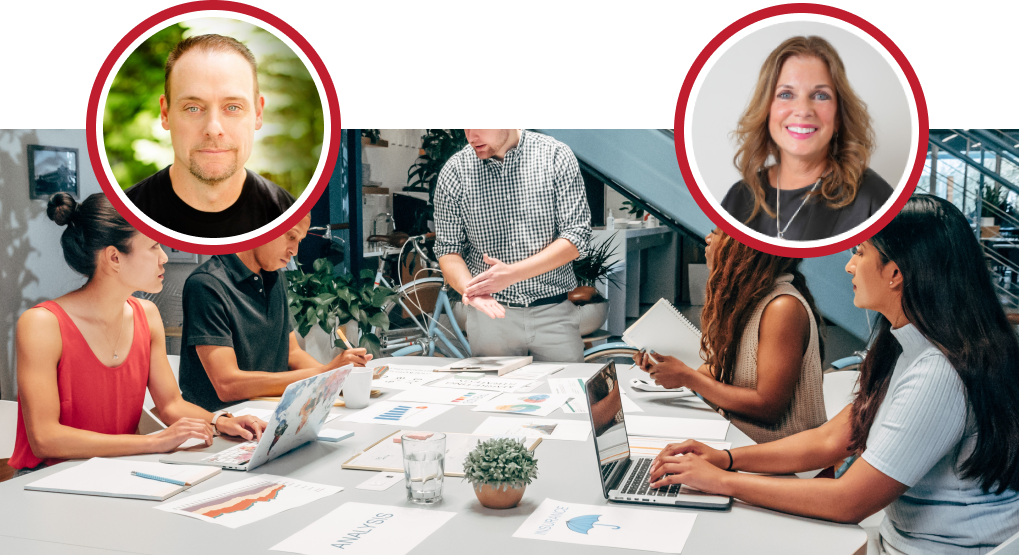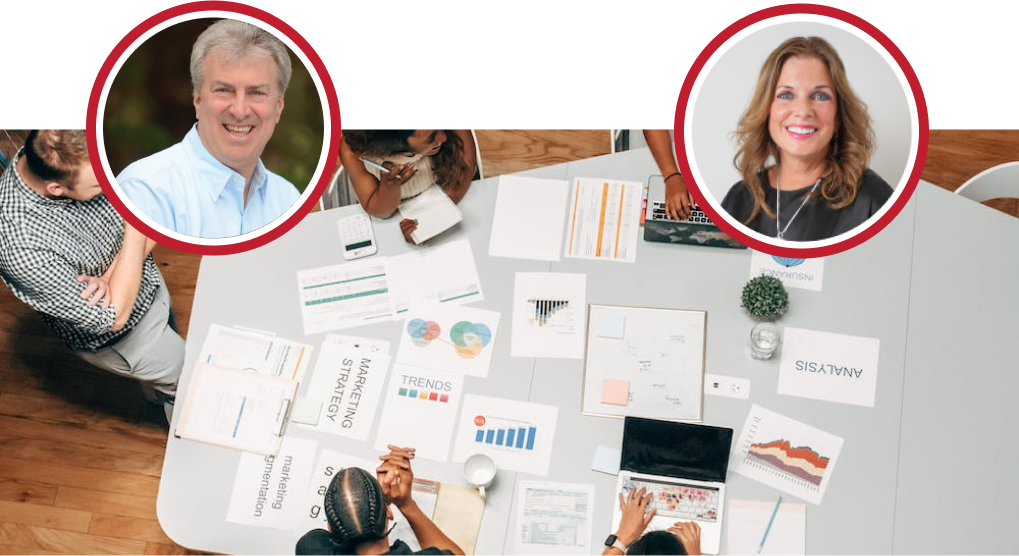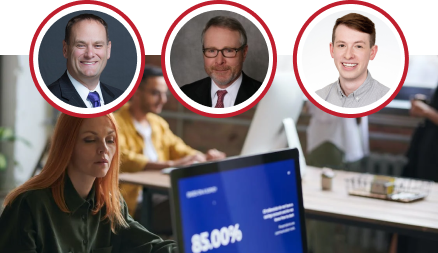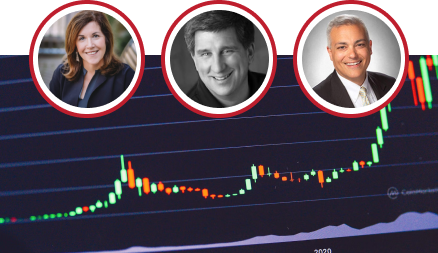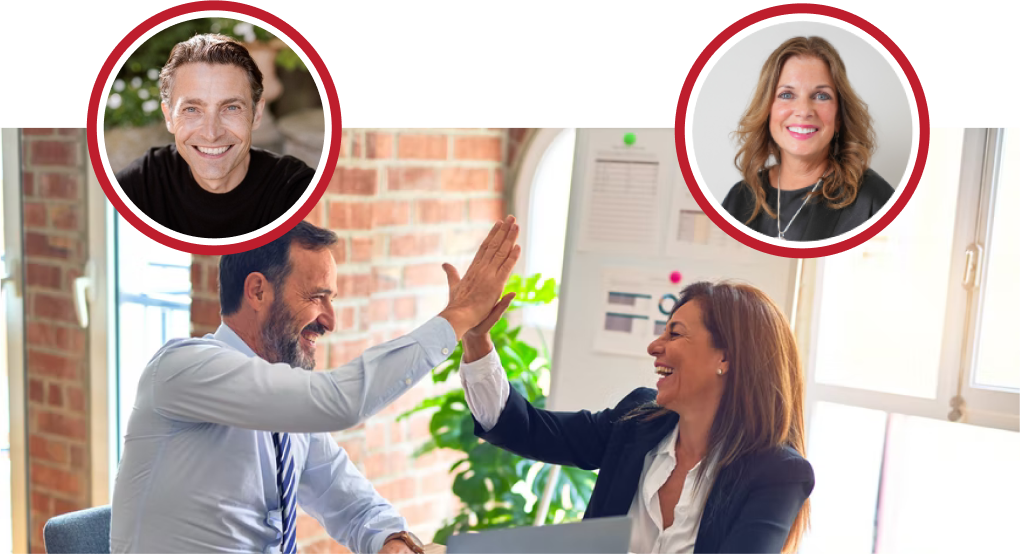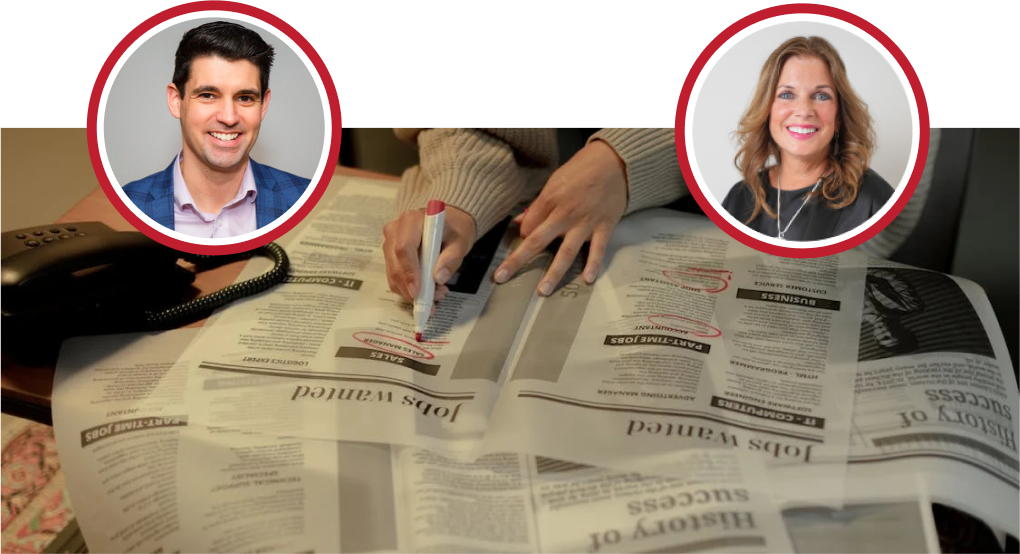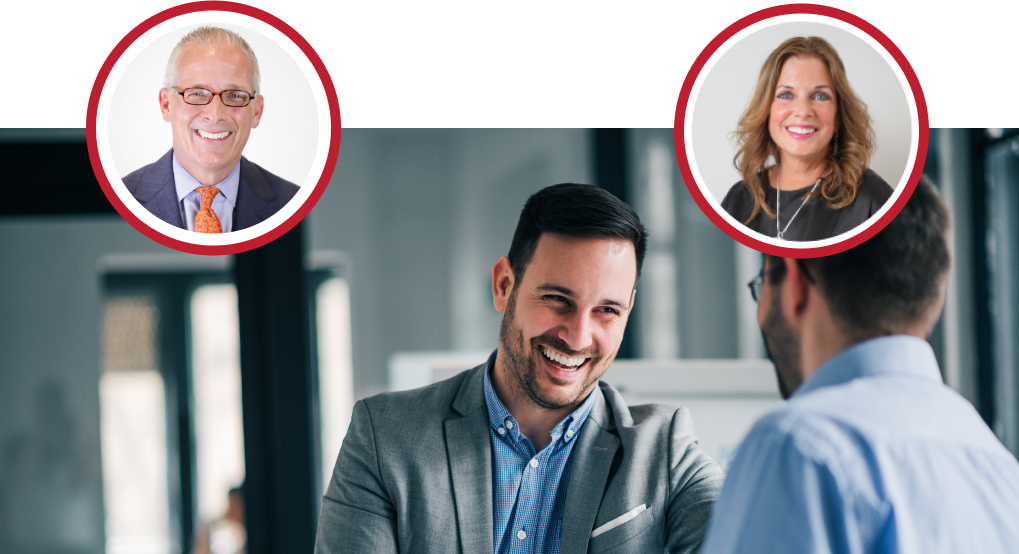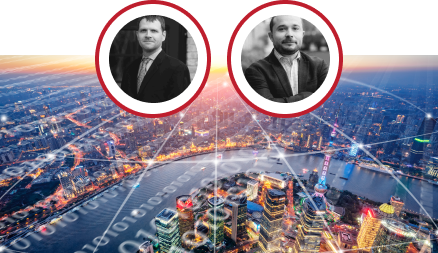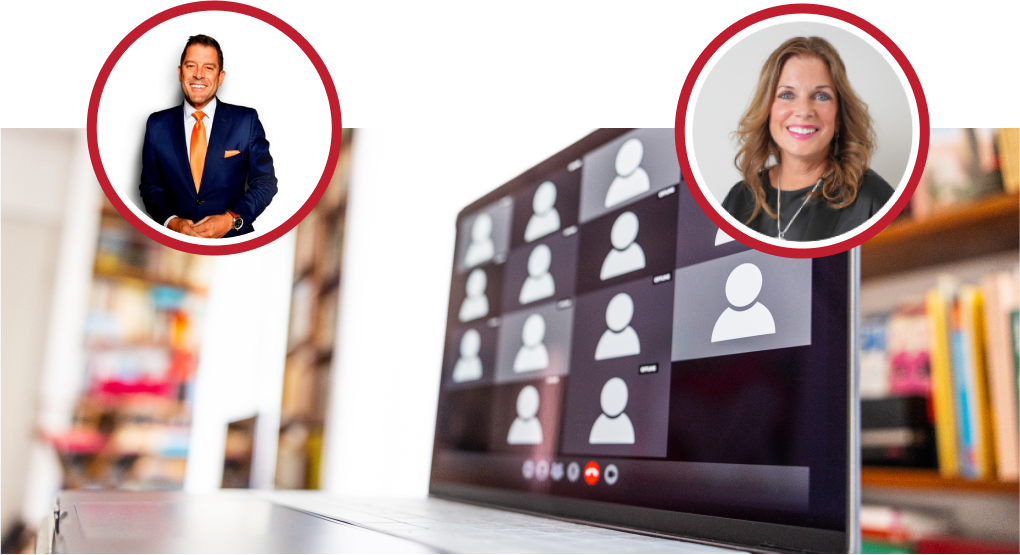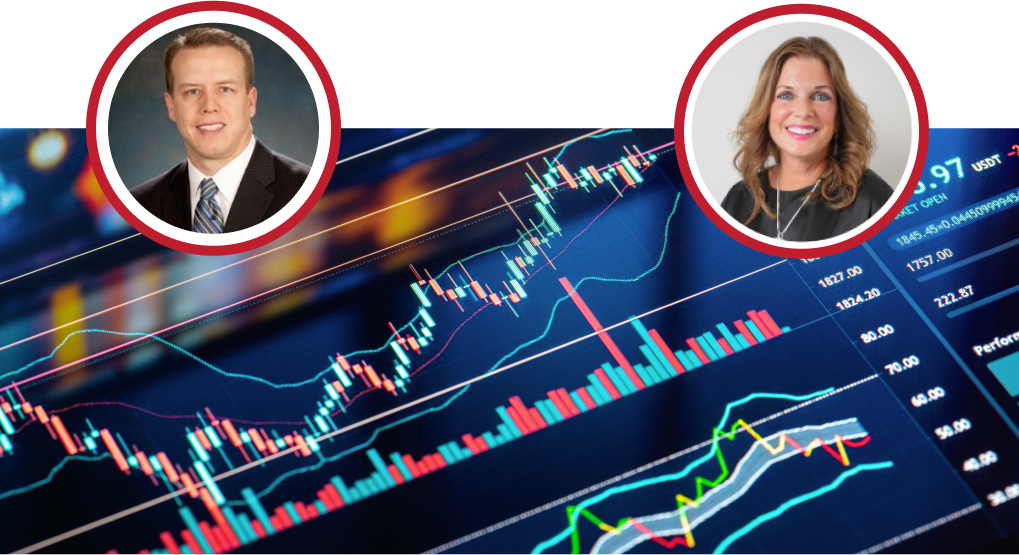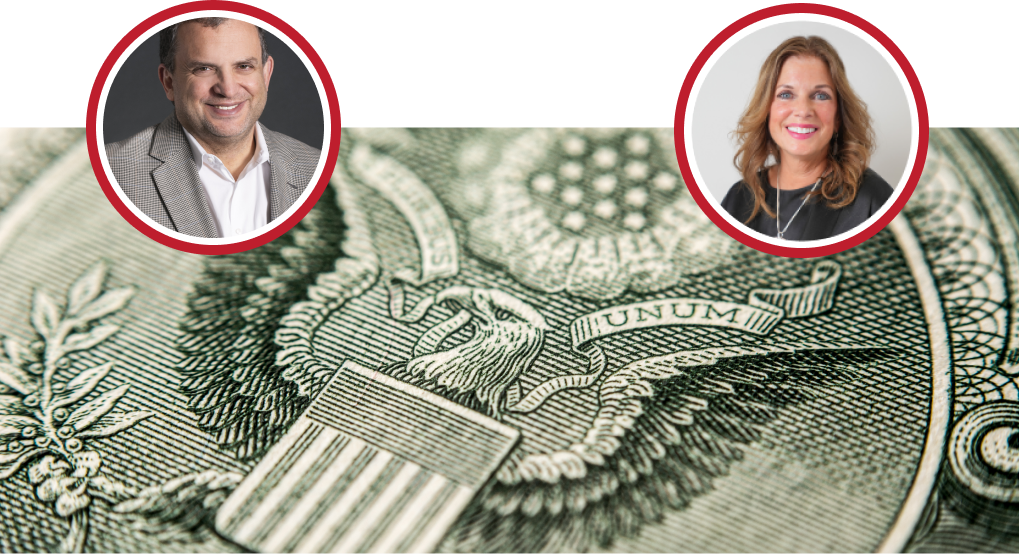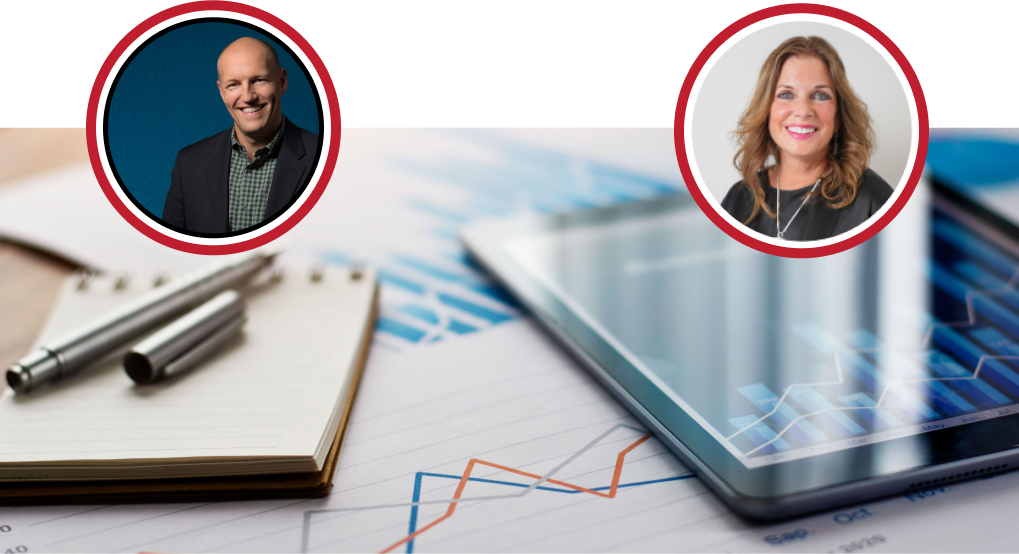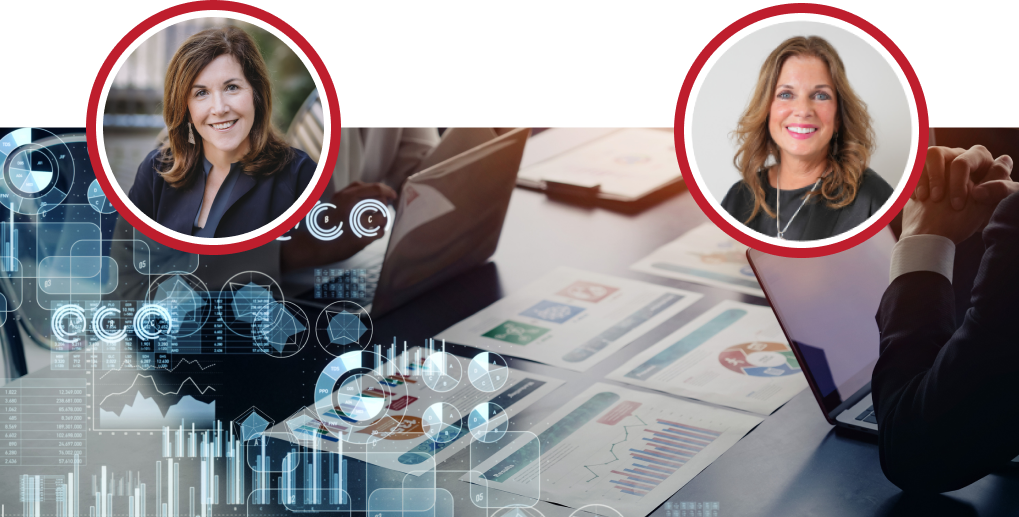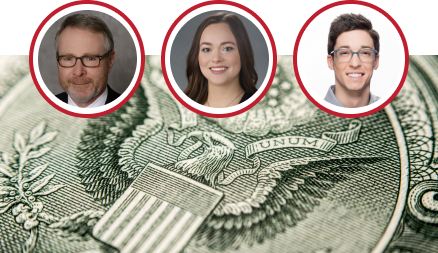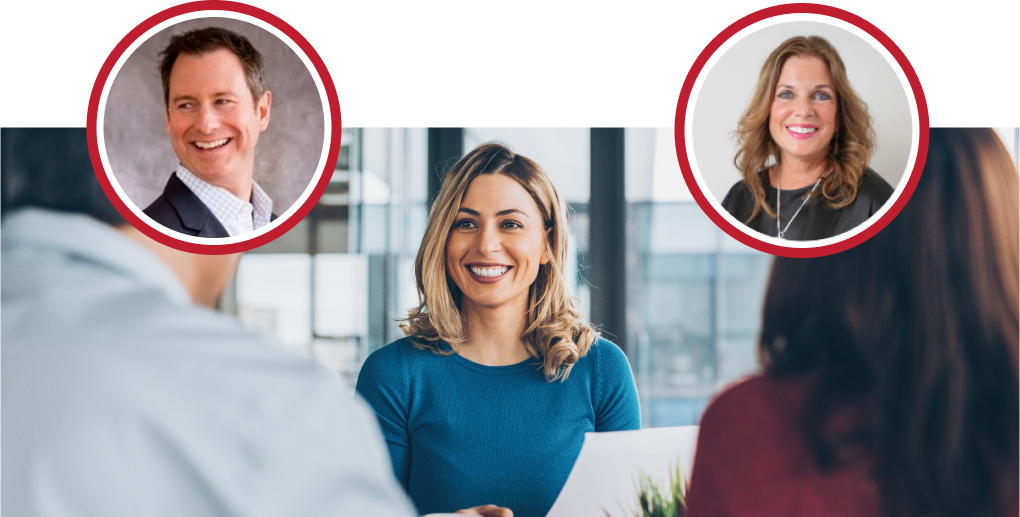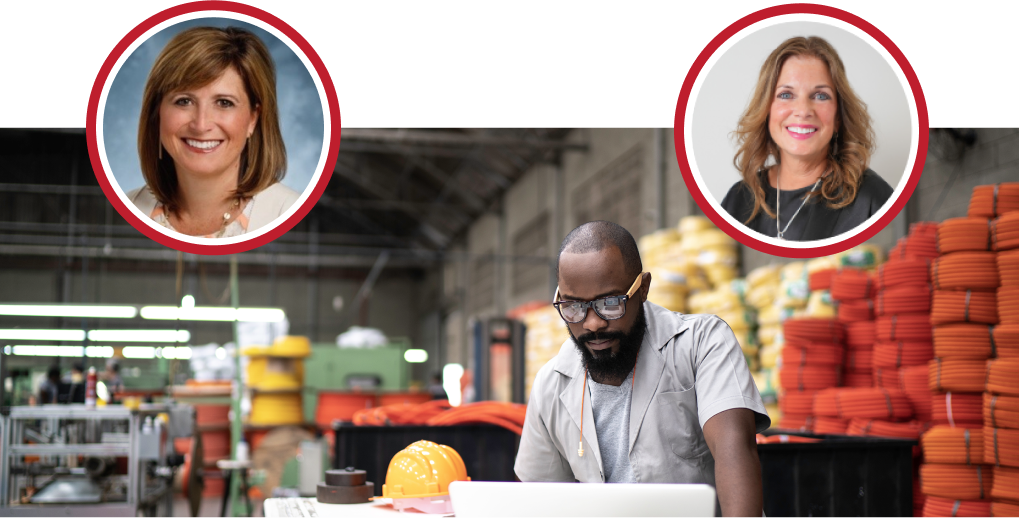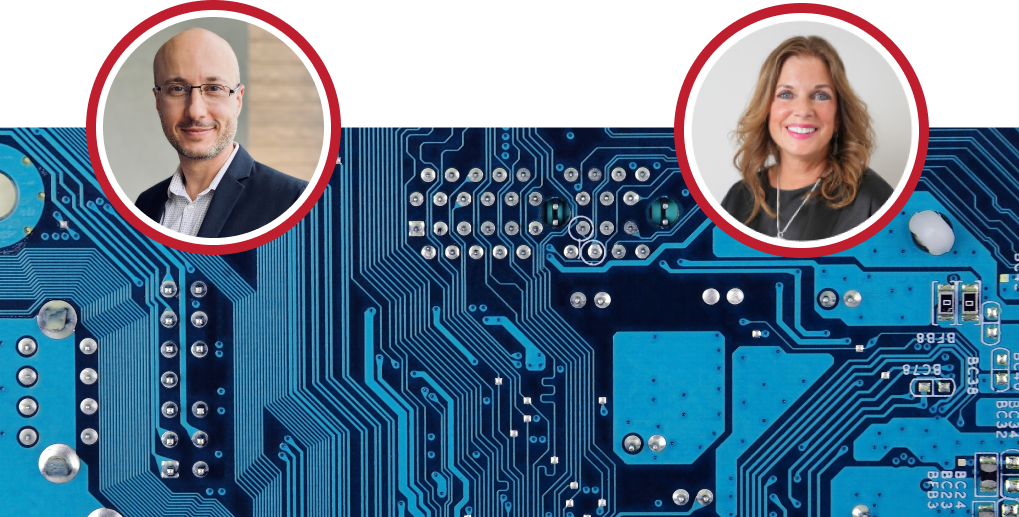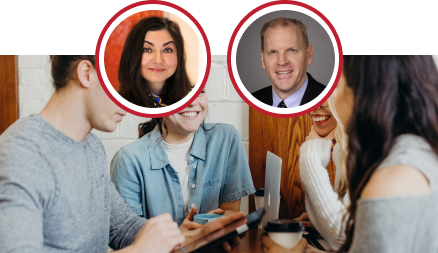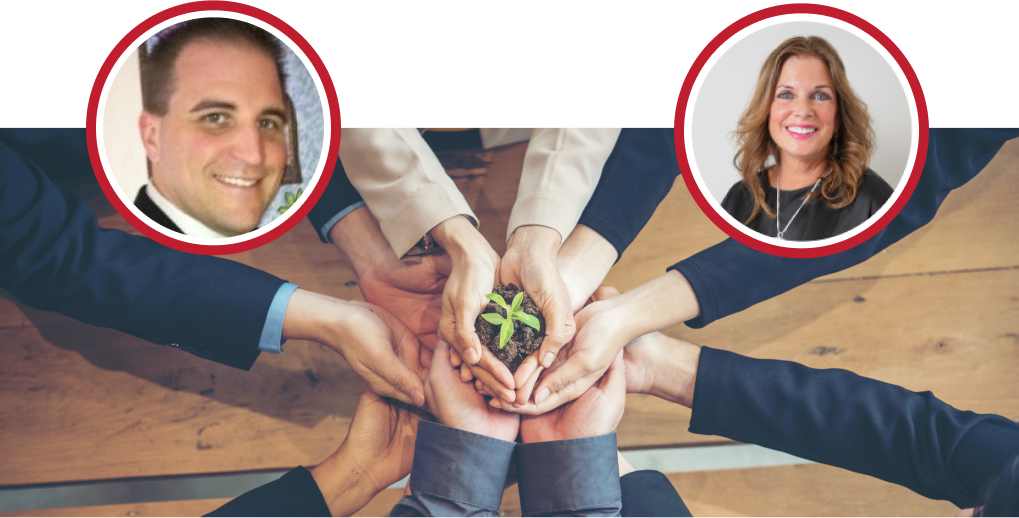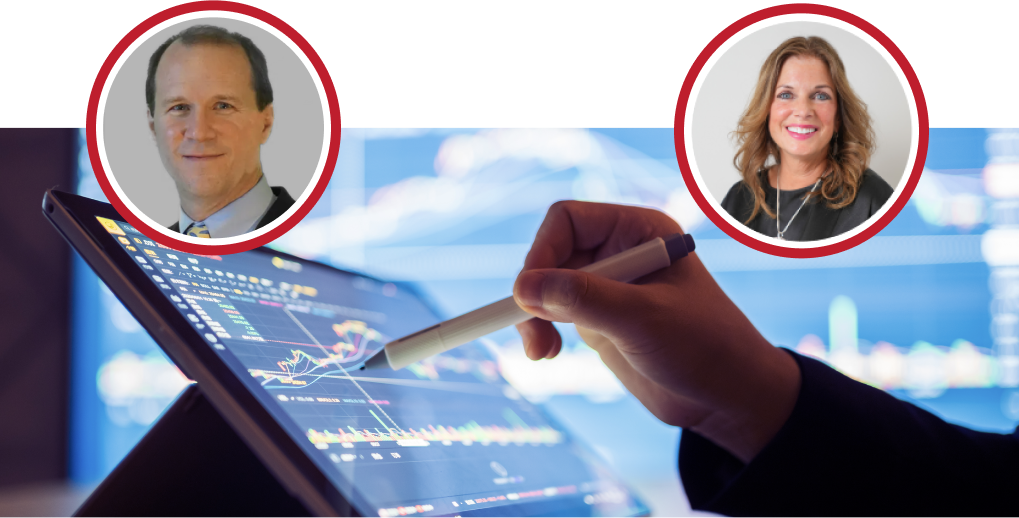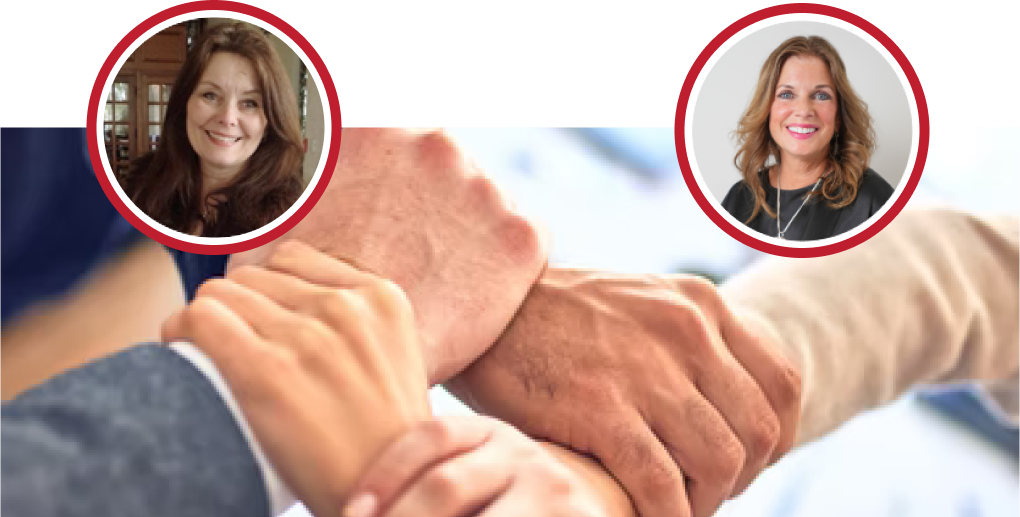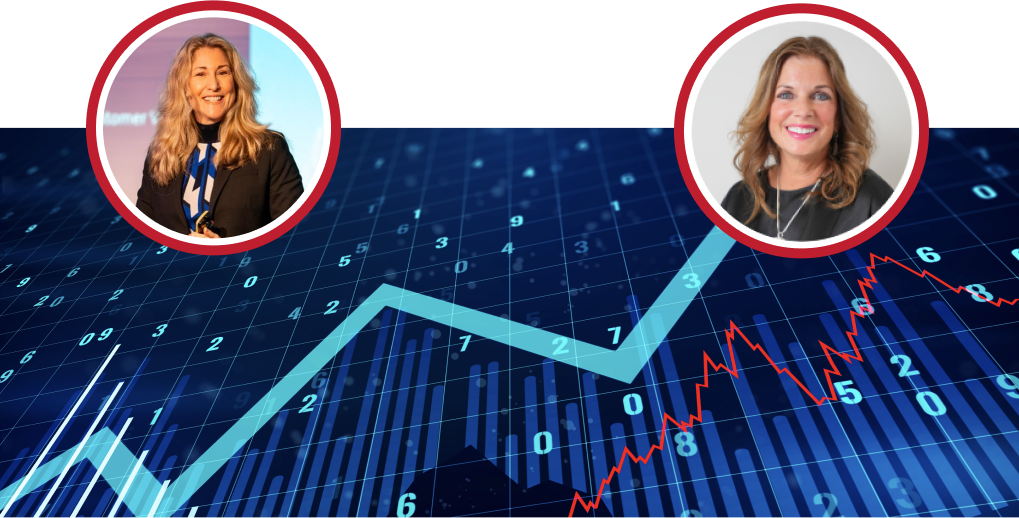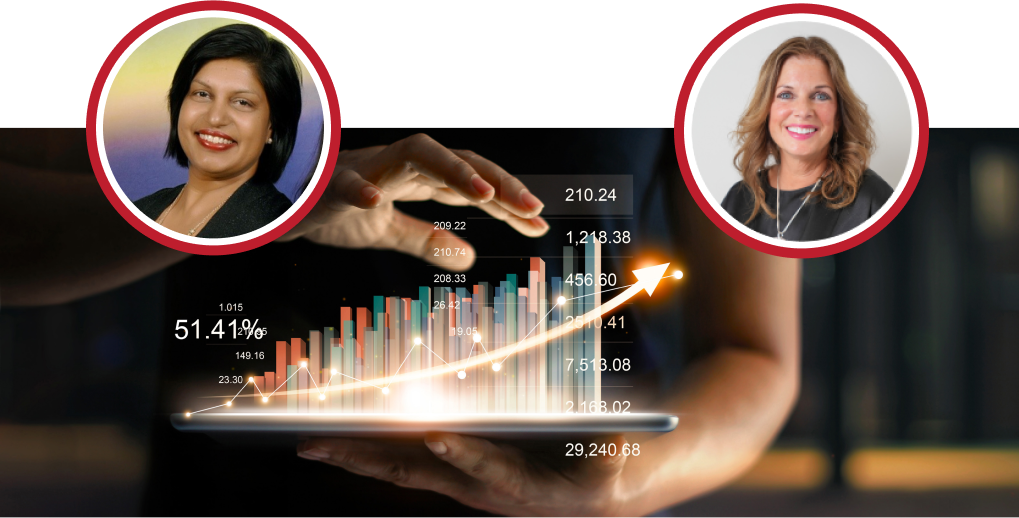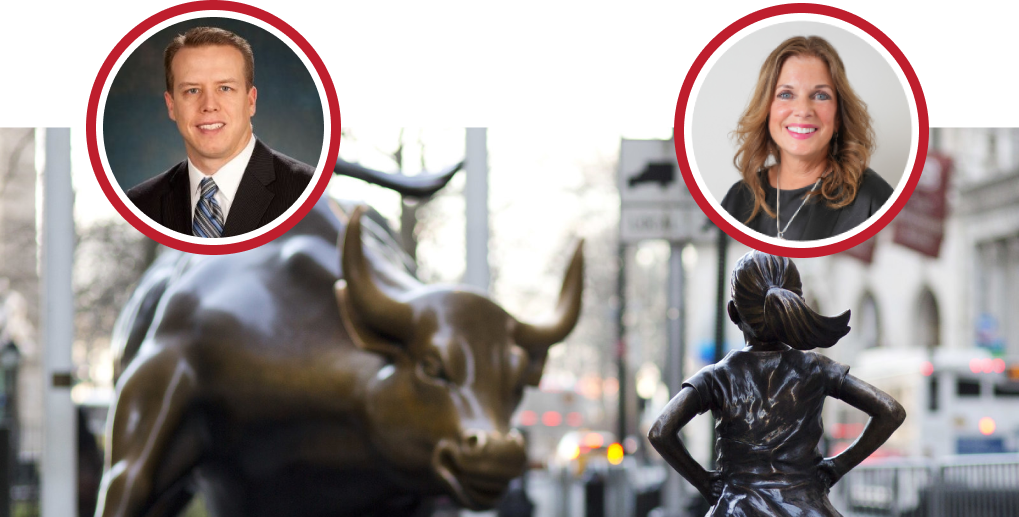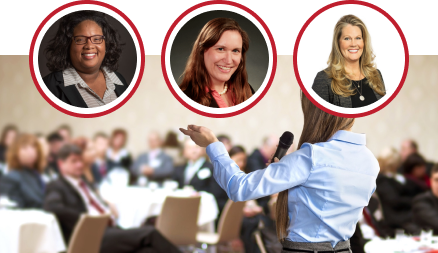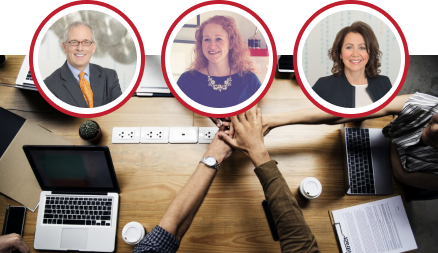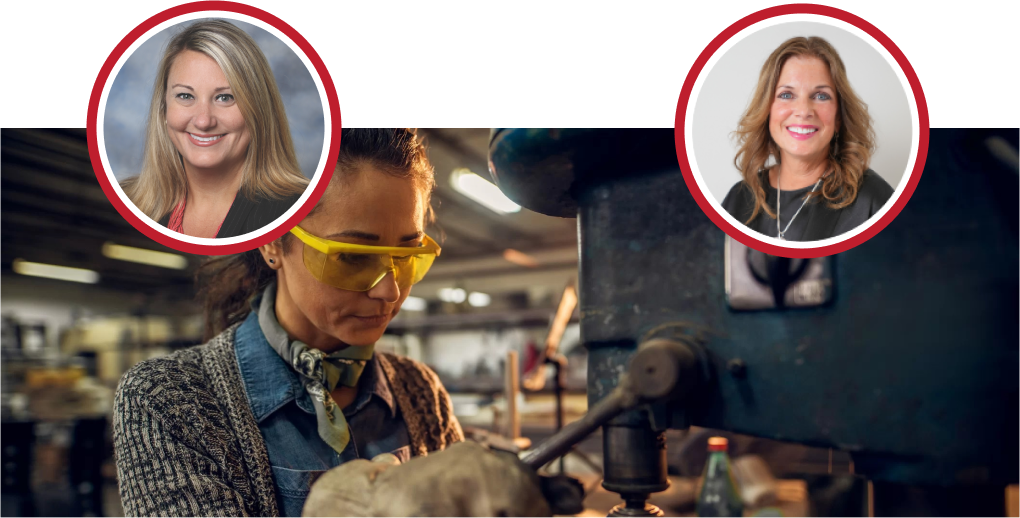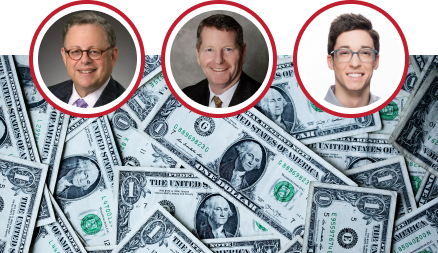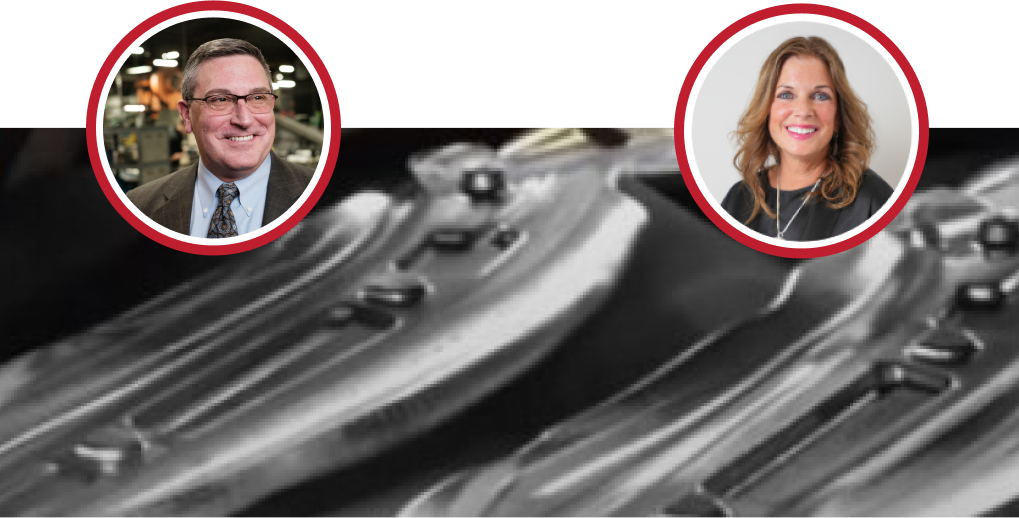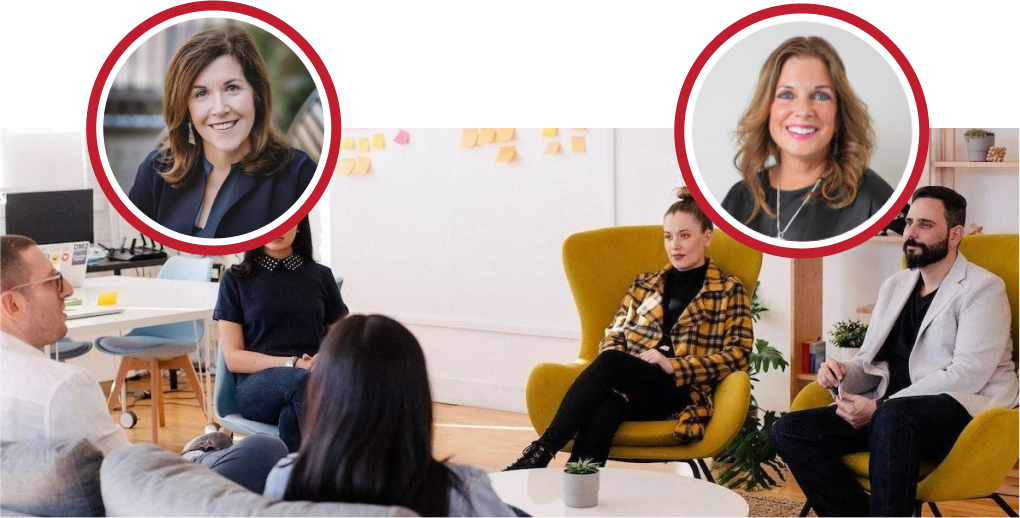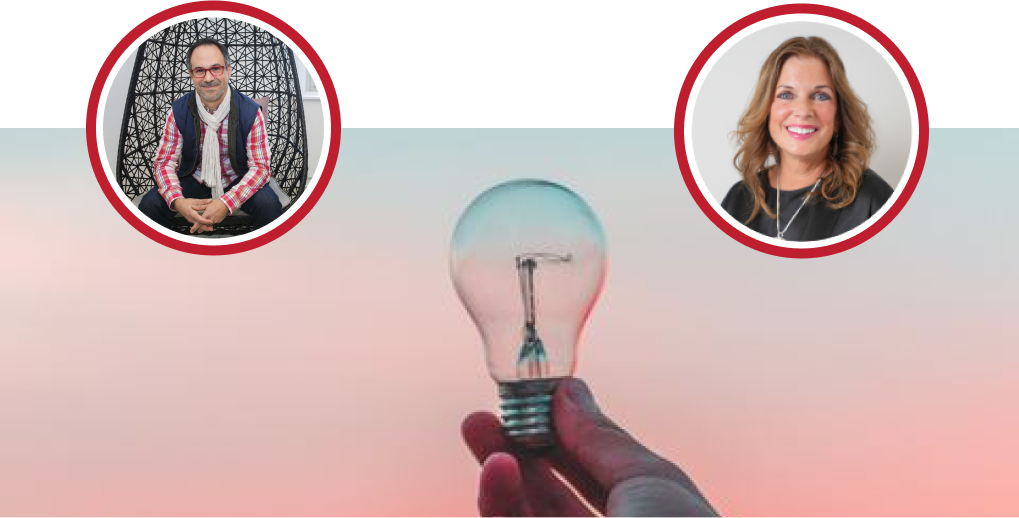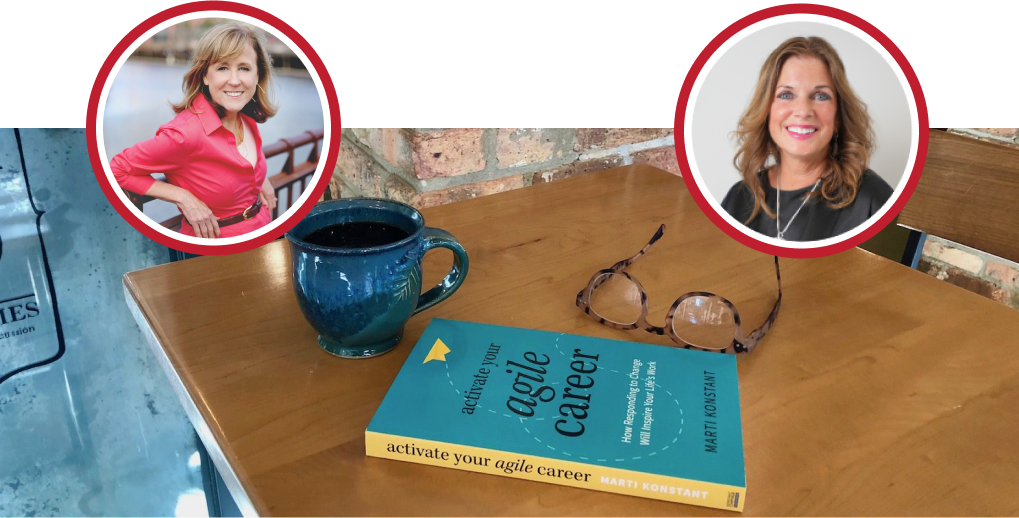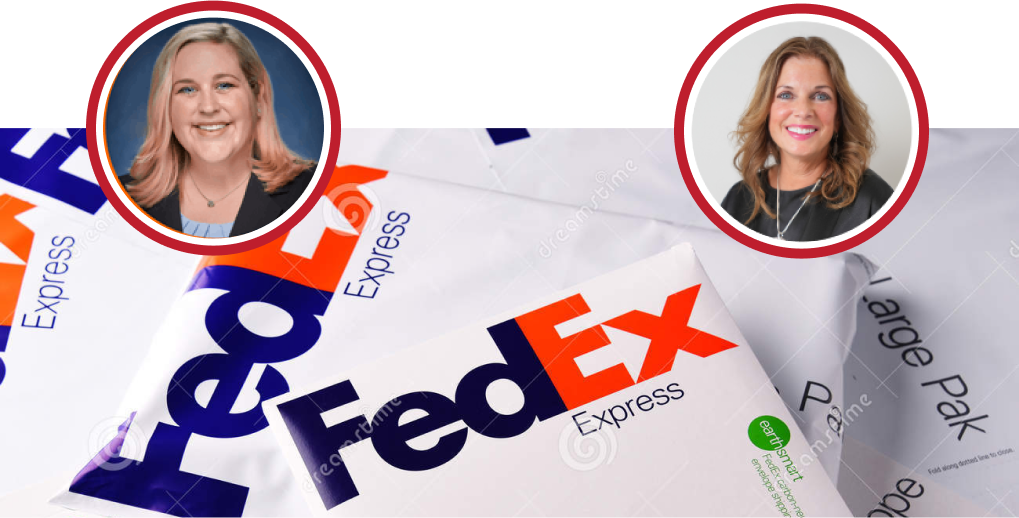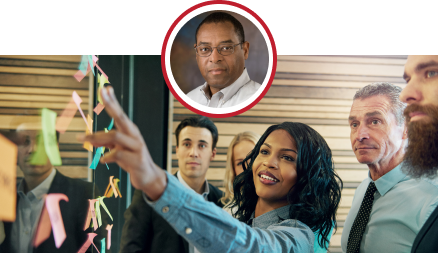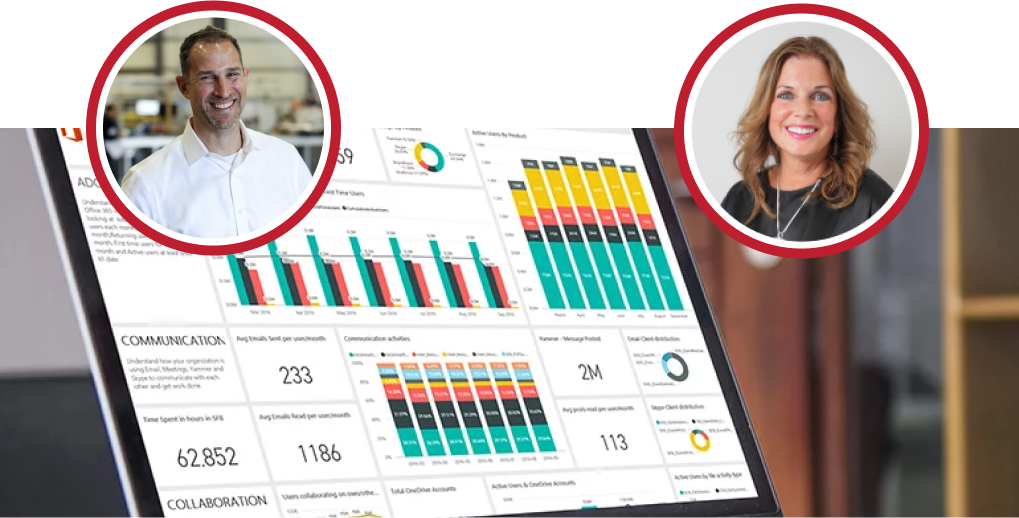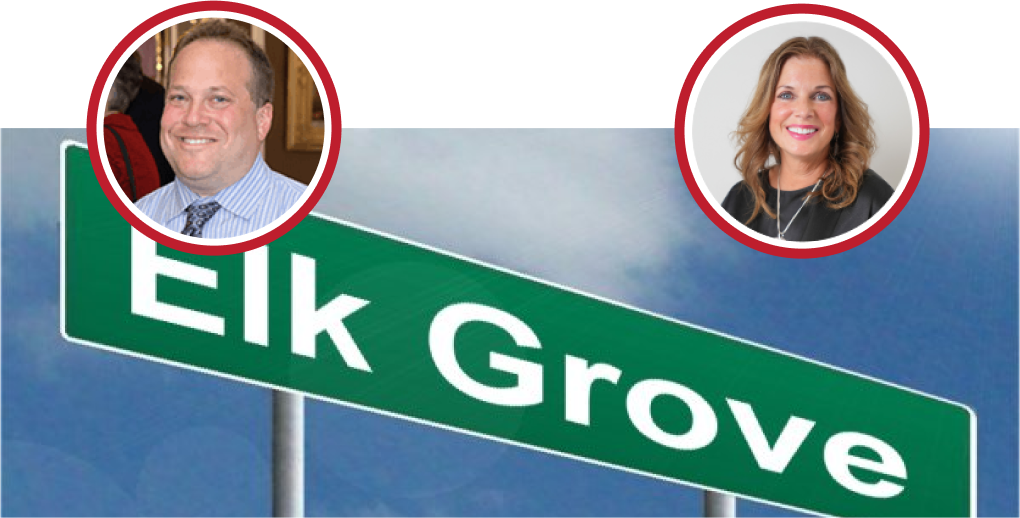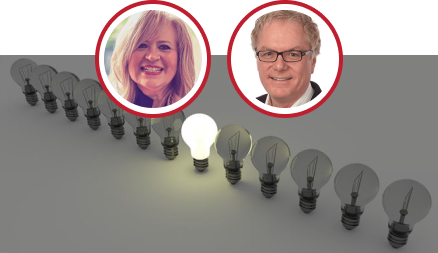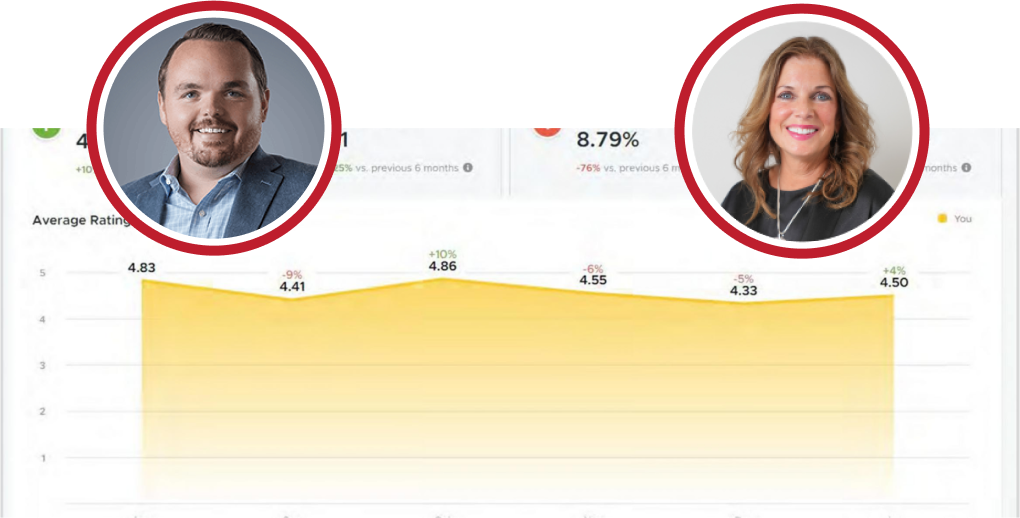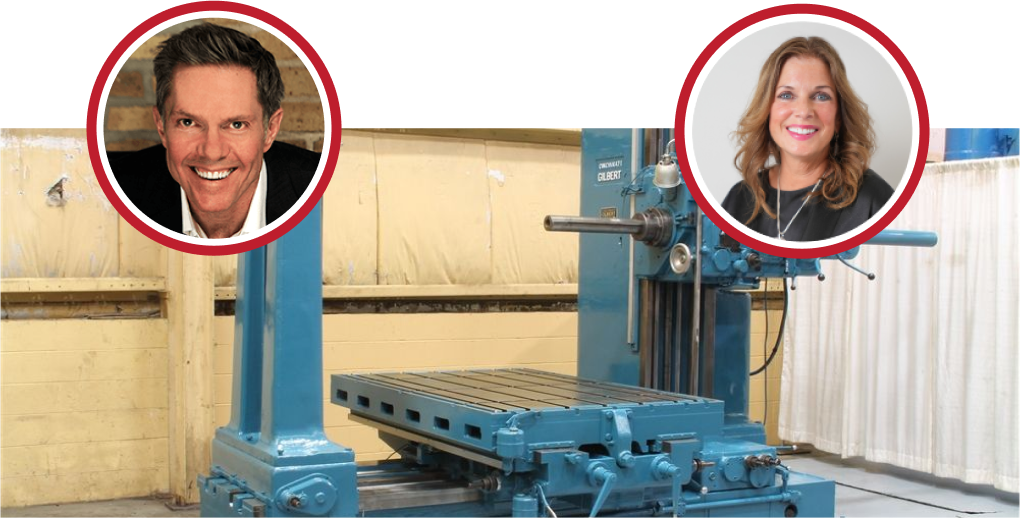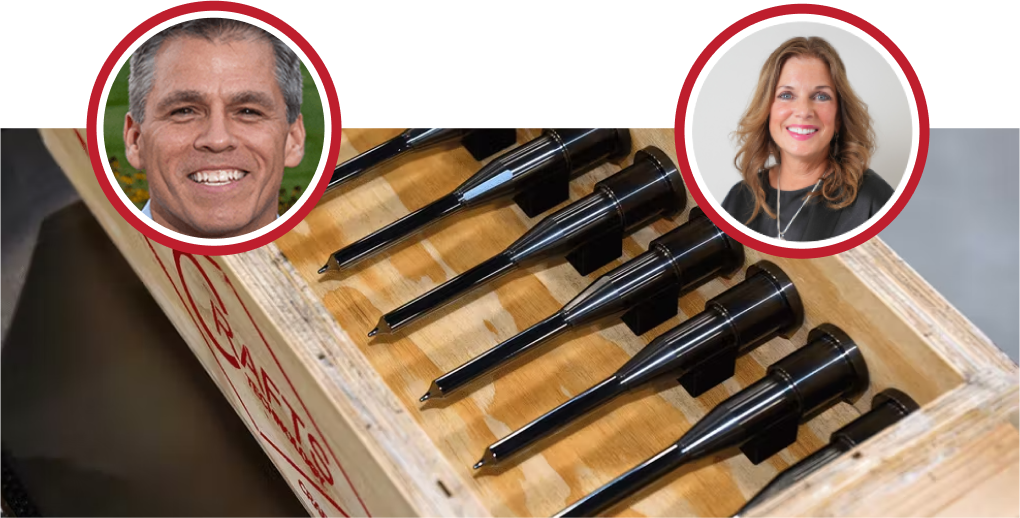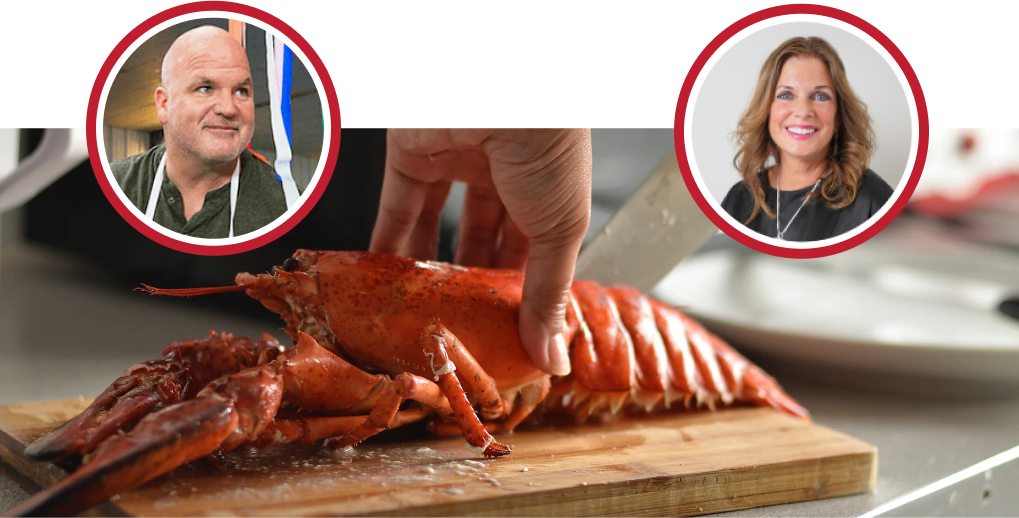Lisa: Welcome to today’s business as unusual webinar where we are speaking with badass industry leaders about helping us thrive and survive in today’s economic climate my name is Lisa Behning and I will be your moderator and host for today’s session I am joined by three lovely presenters we have Chris McKee founder of the Churney financial partners as well as Deanna Walker who is the member team manager also our third speaker is our own Amy Anderson director of client services at Red Caffeine so we are in for a treat today to learn from these three individuals really what it takes to create the ultimate client experience as a few housekeeping pieces we do have everyone on mute today so I encourage you to please use the chat function or the q a option to ask any questions today’s session is meant to be interactive so we want to hear from you and your questions Amy Chris and Deanna all have some wonderful information as well as some graphics and other illustrations to help show you how to create that client experience so we can pull those slides back up and go through them by all means please make sure your voice is heard during today’s conversation as we were starting the webinar I was calling out a few of our winners today so as part of our business as unusual webinar series we are giving away to the first five people who register a 20 grub hub gift card so excited today that we’ve supported businesses like the Strahan cafe Bangkok at beltline and experience pancakes and cafes so one of our treats that definitely trying to help other small businesses such as ourselves as we continue to weather this new normal or whatever you’d like to call it so with that we’re going to go ahead and start today’s presentation so I’m going to turn things first over to our speakers and Amy if you could give us a little bit of a highlight on you and your role at red caffeine
Amy: Sure, so for those who aren’t familiar with Red Caffeine, we are a growth consultancy, and we build badass brands that people want to work with and for I am a director of client services, and I like to talk about my role in three different ways I oversee the account management department which Lisa is a part of I have my own book of business, so I manage my own set of clients and then I also sit on the leadership team where our exceptional client experience is one of our strategic pillars
Lisa: and Chris and Deanna, whoever would like to go first so Chris as the founder will default to you all
Chris: Right, good well, Venturity financial partners as it says here we’ve been around since 2001 so almost 20 years now Deanna and I have worked together here for 17 of those 21 years now uh, and we really focus on doing day-to-day accounting and CFO services for small to medium-sized growing companies uh both in the profit and non-profit world so and uh Deanna is really our chief revenue officer, so she and I certainly have partnered together on this client experience process that we’ve gone through that we’ll talk a little bit more about, and I will tell you she was really the catalyst behind that she, as the chief revenue officer is really responsible for, are ultimately responsible for our relationships with clients, and she identified uh the issues upfront that we had and so um, so that’s why Deanna and I are doing this together because she’s really had a big hand in being a catalyst for change within our organization
Lisa: Welcome, Deanna, anything else you’d like to share about your role? I know Chris did an amazing job really describing what you guys are over to
Deanna: Yeah, no, um, I think I’ll leave it at that. I’m just happy to be here. Thanks for having us.
Lisa: Great, so we’re going to go ahead. We’ll start with our first question today, which really Chris you had started touching on this, so if you and Deanna could share a little bit more on what really drove you to start looking at the exceptional client experience, you definitely had a few business situations that helped necessitate this journey.
Chris: I’ll let Deanna take a shot at that
Deanna: Yeah so I’m kind of goes back to I would say 2017 where we really started kind of actively taking a look at it I will be honest and tell you that I felt it before but I wasn’t exactly sure what it what it was and I sort of couched it as and being a little bit on a hamster wheel someone who at that time was very intimately involved in bringing in new business for the firm I felt like we just were bringing in business to replace business that was going out the door and you know for a while we had sort of the mindset that just part of business was that you were going to have for whatever reason a certain amount of clients that you were just going to lose every year and that was kind of the mindset that we lived with for a while and it wasn’t until we had a retreat in December of 17 where we really took a hard look at that number and found that you know we were losing anywhere in the last three years from 500 000 to a million dollars of business a year and that was a million or a little over was our target for new business so you’re like this cannot keep going you know so um so we really said all right we’ve got to fix this and you know we wanted to really understand more so we assembled a group of folks and we dubbed ourselves the client experience team to really get together and take a step back and see if we could reimagine the experience for um for our clients and we’re a group of accountants here so um but we have really great creative ideas and so we had folks from all um subsections of our organization it just wasn’t Chris and I telling everybody what to do um in fact we tried really hard to be quiet and just let the folks self-discover and we went through a whole analysis period of kind of you know what was the cause of that um we definitely realized that it was impeding our growth as an organization and if we could turn that around it would be one of the biggest drivers of growth for us to not lose as many clients and we all know that customer acquisition is um can be very costly um but we really got into the details of what it was that was driving that and gold it down to controllable uncontrollable and then what we could do about it
Lisa: Okay, and I know Amy on the red caffeine side also looking at customer attrition, but you came in with a special role to read caffeine if you could explain that for our audience
Amy: Sure so when I was hired one of my key responsibilities was to really oversee that exceptional client experience strategic pillar and build the RC retention business model I mean it was great that we had this at a pillar because as a pillar because of course who doesn’t want to deliver on an exceptional client experience but it wasn’t defined there really wasn’t any substance behind it we knew we had great clients great retention rate we were doing well in new business but we really wanted to dig in and understand why so we could make it a more scalable part of our business we had just brought in a lot of new clients we wanted to turn them into those long-term partnerships you know as Deanna said you know everybody knows it costs a heck of a lot more money to bring in a new client than to retain a current one and with the new business efforts we had just gone through we were feeling that so we really wanted to make sure that we were you know putting the investment to good use and really making sure that we would put those clients on a path to a long-term partnership we really believed that investing here would lead to higher customer satisfaction rates reduce that customer attrition and increase the revenues we also felt that this would be a way to align our internal team as well on how do we talk about what we do how do we talk about you know what makes us so special and unique and that people really want to work with us so to give our team that vision and that consistency and what we offer was something that just became a part of the project
Lisa: Chris, anything you’d like to add? I know, as Deanna said, it was definitely a process and a journey for you, and it wasn’t done overnight.
Chris: Yeah, I was uh, I was; it was a big eye-opener for me because when we actually put together the numbers and how much attrition we had, it was a little bit shocking. I know that in the back of my mind, I thought it was less than it was and so um but once we started talking about it, I think Deanna and I realized this was not going to be a problem that we would solve overnight as well, so it was really a two-year journey believe it or not and uh that we pulled together an internal workgroup which is kind of what we do we want to tackle a big problem and as Deanna said we had some folks from throughout the organization, and by starting with attrition we started asking ourselves, and we went client by client for a previous couple of years and said okay why did we lose this client, and we started to see some commonalities and that that that was real that really helped us start down the path of how do we need to transform our relationships.
Lisa: Well, that’s wonderful; well, let’s dive in and tell our audience a little bit more in case you’re not familiar what is the ultimate client experience or an exceptional client experience what we’re trying to craft, so I know Amy, you’ve got a great graphic to share with us which I’m going to pull up on the screen so you can start telling us a little bit more about what exactly are we talking about
Amy: Sure so I believe that an exceptional client experience is basically what you do that keeps customers working with you that keeps them happy it’s what is your stickiness factor so as I mentioned before this was something that we really wanted to uncover for ourselves so we worked to define what ours was so we did internal brainstorming sessions we talked to clients we talk to mentors we talk to friends in our industry to really help define what makes us unique and special you know as the graphic shows we’re looking here for partnership in perpetuity and I know Julie would want me to do the hand gestures right now too but that’s really what we’re going for is what are the what’s the recipe that gives us that partnership um so as we were going through this process because I agree that this did not happen overnight this it was quite a lengthy process of you know really diving into ourselves and figuring out what worked and you know what we wanted to talk about and a mentor we were working with at the time said one of my most favorite quotes and he you know really helped us see that you know you need to tell people you’re going to love working with us and here’s why don’t be afraid to share why you’re amazing so you know we knew early on that this was not going to just be something we hung on a conference room wall we wanted it to be something that we could share with clients so we landed on these principles and built a cool graphic for it so the graphics or the principles themselves have been slightly refined over the years but the core of what we do and bring to the table remains the same one thing you’ll see about the graphic is that it’s also not just about what Red Caffeine does but it’s also about what the client needs to bring to the table you know we we realized that in our most successful partnerships that it really just wasn’t about what we were doing but it was about what was happening on the client’s end you know what were what are those expectations that we needed them to bring to the party to make sure that both sides were really in it for the partnership in perpetuity
Lisa: That’s great, and I know Chris and Deanna, and I’ll direct this to Chris specifically as Amy’s talking about you know partnership and advising the expectations you actually literally use that word when you started talking about your trusted advisor approach so similar concepts so Chris could you explain kind of where venturi’s trajectory took you
Chris: That’s great and I know Chris and Deanna and I’ll direct this to Chris specifically as Amy’s talking about you know partnership and advising the expectations you actually literally use that word when you started talking about your trusted advisor approach so similar concepts so Chris could you explain kind of where venturi’s trajectory took you yeah well it’s interesting because as we started on this journey uh we actually were kind of led by you guys a little bit we were um talking kind of brainstorming with um with your team on some on some uh open book management stuff and we got to talking about some of the struggles that we’ve had with client experience and you guys were out ahead of us in all of this and had that graphic developed and boy it was uh a real another real catalyst to kind of get us going on the journey and kind of point us in the right direction and that idea of setting expectations with the client Deanna’s going to talk about that in a little while um and their mutual shared expectations I think are a big piece of it so um so I think you know we got a debt of gratitude to your team for helping crystallize for us and catalyze for us where a little bit of where we needed to head and so where we ended up after going through our process of what causes a client to leave what causes a client to stay and what do we need to change in order to make it better and to improve our retention rates we kind of came up with a multi-point plan and the key to that is really developing a trusted advisor relationship with the client um we really when we started Venturity saw ourselves in very much a transactional role as their accounting department we pay the bills and close the finance close the books and do all those kind of things but we saw ourselves we saw ourselves as just the humble bookkeepers which is great in many ways that approaching it from a humble attitude of service but um but it didn’t it held us back from really using our expertise to help inform and advise our clients and so as we looked at the components and we realized there were several things we needed to change about our relationship with the client setting expectations having regular regroup meetings with them something that we took away from your process as well but really kind of those tools help us become a trusted advisor and it’s kind of a cliched term but I’ll tell you we haven’t come up with anything better we’ve really got to um we learn a lot from the accounting that we do about what’s going on with the client’s business and we need to use that expertise that we have and the expertise we have from working with all of our various clients to help our clients in those crucial moments as a trusted advisor as accountants we’re naturally seen as a trusted party but we have to also earn that trust through the way that we interact with our clients so I think our big piece of our of our journey was how do we we’re doing a great job one of our values is great accounting and that’s the one we’ve always knocked out of the park we do a great job with the accounting we have another value called exceptional service and that’s where we felt like we were really kind of falling down on the job and it wasn’t complementing the great accounting that we do and so um you know a big piece of this journey was figuring out what tools we needed to put in place to transform the way that we interact with our clients so that not only are we giving them great accounting but we’re helping them do something with that great accounting through being a trusted advisor and being there when they have questions and being more than just a humble bookkeeper being that trusted advisor but it’s a it’s a process it’s a trust building process in order to get there because you know trust is the first part of that word trusted and it takes time to build that trust so Deanna anything you want to add to that
Deanna: Yeah I just would add two quick things I think one of the things early on that someone coined in our group and then we just sort of took everything and our decision making back to that is we wanted to be the folks that get the call and you know super important and so what does that look like what do we need to do how do we position ourselves um as an organization and really at every level in the organization to position us to get that call whether it has to do with accounting or not just be in that inner circle with our clients that they’re you know when something comes up whether it’s a situation or something great to share or what have you we’re on that short list of who they’re going to pick up the phone and say hey I want to tell you about this or I need to pick your you know in your ear about it um I think the other thing internally that was became super important is because we are a team based organization we wanted to make sure that we thought about how everyone at every level in the organization could be a trusted advisor in their own way in the roles that they play so it wasn’t just something that the folks that managed their relationships at the top level had to take on and bear by themselves it was something that you’ll see when we talk about kind of our approach that it transcends our entire organization from the beginning of our relationship to the end but it also transcends everyone on our team from you know the person that is you know sitting at the front desk and greeting our guests to you know to Chris really and any and everyone in between and what impact they can individually make to get us as a group to earn that status
Lisa: Well, let’s actually dive into the tools, Deanna, because I know your team really thought through when you said the entire team got together of how do you bring that from the bottom up and the top down so everyone had very clear expectations and Venturity did a great job of really setting that very clearly for your team
Deanna: Yeah no um great segue and Chris I’m glad that you gave credit to right caffeine because it was those conversations that we had with them that really gave us some clear direction on sort of where we needed to go um so our version of the of the sheet that you guys saw just a little bit ago is this expectation document that’s here on the left um and then we have some internal planning documents that we use but essentially um the process and again this was developed by the the work group that we had um it took us a little time and kudos to Chris because I probably would still be working through the details and making sure it was perfect before we rolled it out but he encouraged us to get a few things done and then to test it and try it which was um allowed us to kind of put it into practice sooner but we developed a whole program that literally starts at the beginning of our sales process like I said and continues through to when we um when and if we enter the relationship even though our goal and we set a goal which I think is important is to have a 12-month consecutive period with um without losing a client um to you know at all to anything that’s in our control right so and so that was goal first and foremost and we rolled it out through a series of regroup meetings but before we got to that our bd person would start is now talking about it in the beginning stages of our relationship how great accounting is important but also the way we approach our relationships and how we have open lines of communication and an active partnership that stand right alongside great accounting so those conversations are happening in the sales process we even added a section to our formal agreement that our clients sign that talks about the mutual expectations and holding up these expectations um they formally get introduced in this process to um at what we call the implementation meeting where we’re having a kickoff call and or a kickoff meeting if you will and we literally go through these expectations and like red caffeine ours is broken down into two areas and we start with what we’re committing to them but then we also talk about the commitment and the expectations that we have on our end so that we can have a really strong relationship and we there’s lots of points here but we ask the clients to talk about what the ones that are most meaningful to them and we make note of those we talk about the ones that we think and feel could be important in the context of this relationship because we have different scopes that sometimes we do with our clients so sometimes certain things take a little bit more precedent than others in in these various categories so we start that process in the implementation meeting and then we reevaluate in the first year we get together and look at this document and see how things are going about every three months with our clients just to make sure that we’re still on track with them and that’s a meeting that is generally it might be added on to a meeting where we talk about financials but it’s very much a purposeful meeting with a set agenda and a process because our folks again like process so we’ve got agendas we have sample emails that we do to um to get the meeting going it’s important that we have all key decision makers in that meeting so there’s a whole host of things that we want to make sure that we check the box on such that that meeting is productive for both parties involved and every time we have this meeting we revisit what they said was important before and then we kind of get check ourselves s and them on how we’re doing on that and then we make any adjustments that we need to along the lines of expectations so after year one we have these meetings annually and then as needed so if something happens that there’s a transition at the client level or at our level we have a great opportunity now to get back to the table um and have these meetings to discuss things that could affect the the relationship and we would solve the clients plane a lot of times historically um in the beginning when they when they had an issue and then we get up and running really well and then we never thought to go back and ask them again hey how are we doing and or have your or have your priorities changed and I think that’s a lot of times where we got off track and so now we have a really good mechanism to do that and it helps our folks because we set those expectations in the beginning and then everybody knows that we are going to go back and revisit on a regular basis the the matrix on the right is just part of what we call our toolbox to help our folks internally consistently prepare we’re a team-based organization and so we wanted to have cons just like we have consistency on the accounting we want to have consistency as to the way we approach um these types of meetings and give our folks you know a process from which to work on that then they can take and make their own based on how their relationships are going or what they need to talk about so we have one of these matrix planners for sort of every meeting that we do in that first year some are a little bit different and so people can use these tools as a resource when they’re when they’re planning for the meeting and then we’ve got some measurement that we’ll talk to in a minute that sort of gut checks how we’re doing overall on the on our process we’re in our first year and um it was interesting coming through a little bit of a wrench but we’ve really done well in terms of getting out there with these meetings and encouraging our folks to try it we did a two-day training session to kind of get everybody up to speed but it’s nothing like just going through the process and trying it to really help you get a feel for how it’s going to work Amy
Lisa: Great Deanna, and actually before Amy, I know you’ve got a few things to add on; there’s a great question for both of you, so talking about the client experience now, Deanna, you’re mentioning a lot about your team, and you know all being located at one spot I know Amy same thing with caffeine we’re remote right now but how do you see having team members overseas potentially affecting your client experience or have you done anything to help your remote workers whether in you know their guest room or if they’re across the country to help make sure that that ultimate client experience is really being felt still
Deanna: Uh yeah I mean I’ll answer quickly and then um so you know again I think we really focused on trying to have everybody in the organization know what how they can make an impact on their aspects of what they do so even answering a simple email in the right kind of way can be something that contributes to being a trusted advisor in that overall client experience so um you know we our preference would be to have these regroup meetings in person and we haven’t been able to do that quite as much even though we’re very familiar and have been with working um in the zoom type of environment because we do operate generally with our clients on an outsourced basis but it’s become more important than ever to make sure that when we have these meetings we get our folks um on our team as well as clients to turn their videos on and really have as much as possible you know that that interaction um so the remoteness you know you have to get a little bit more creative with how you do it we do a lot of prep before the meetings as well um to make sure that you know we know who’s going to lead what part of it and so we have some good continuity there and that that’s helpful in terms of bringing us together even though we’re not really together physically Chris I don’t know if you have anything to add to that
Chris: I was going to just add it because somebody specifically asked on the India piece because we do have a team over in India and uh those folks are not currently anyway customer facing client facing um and having that India team has allowed that any team to do to handle a lot more of the transactional accounting pieces and freed up our team here to spend more time with the clients and client facing so currently our client experience program really focuses on the team here because that’s really where we can add value to the relationship and so um you know so I can’t answer like exactly how that would work when working with our team over in India because at this point we’re still uh really uh that in a personal relationship we still own on this side of the ocean I don’t have an objection to them eventually building a relationship but that’s just kind of the way that we’re structured right now is the Indian team really handles a lot of the transactional back office type work allowing our team to really spend time with the client be analytical that kind of thing
Amy: I would just echo all the sentiments around communication whether it’s with your internal teams or your clients themselves you know this has definitely changed how we operate but the principles are still the same and you know for us we meet really regularly as a full team um we’re a part of EOS we follow entrepreneurial operating system so we have weekly meetings as a full team where we’re talking about this we’re talking about what’s going well with clients we’re talking about you know some areas of concern to make sure that everybody is really on the same page so everybody has a voice too in determining okay what do we need to do here or what’s an idea we can do here um and then in terms of clients we’re trying to be really creative too and we you know have a good history and record of doing a lot of video calls doing a lot of conference calls so for us this was a little just natural evolution of what we’ve been doing but we have definitely been trying to make it you know to raise that experience even being online so we do a lot of Grub hub lunches or we do you know happy hours with our clients where we send them the grub hub vouchers and say you know get some appetizers and drinks on us or let’s have a virtual lunch together and still break bread together and have those conversations but you know there’s so many people have great unique ideas out there and I think we’re all just taking little pieces of what we’re hearing working from others to make the experience still positive and still feel as team-oriented and focused on the goals we possibly can
Lisa: Oh great, Amy, that actually segues greatly into your practice. I know, too, as Deanna’s talking about a lot of the tools that Venturity has. As you’re talking about ways that we’re virtually connecting with our clients, there’s also a toolset that we’ve been using to make sure that we’re still maintaining that connection. We’re setting expectations, so could you share a little bit more about some of the tools in our kit that are useful for everyone.
Amy: Sure so I’m gonna echo something that Deanna and Chris talked about too with just our exceptional client experience graphic you know just to be able to have that as a living breathing piece to start the conversation to give us a chance to share why we’re different what you can expect what we’re working on for the relationship so we use that graphic in a lot of places uh client onboarding quarterly meetings you know revisiting with the client to make sure that everyone is meshing on those same principles but I do have to say it’s definitely a big hit in those new business meetings and it really changes the tone when you switch it over and you say you know hey prospective client this is what we expect of you and when we bring that back up into meetings it is a little oh yeah I have a role in this too and I have to set the team up for success um I will say that we don’t have clients sign that part but that’s pretty cool I think that helps uh legitimize it even more because you know we want to work with people who want to be good clients too and help set us up for success so I love that um other tools we use honestly are the principles themselves we make sure that we’re delivering on them and you know really talking about them in those deeper dive meetings we do something called quarterly business reviews or business reviews because they’re not always quarterly sometimes they’re monthly sometimes they’re quarterly or just half here but we really dive into those pieces of the principles and show action there so we revisit everyone’s grow to market strategy and really have those honest conversations about what’s working what’s evolving so that’s the transparency there we’re also pretty aggressive on setting KPIs and defining those success metrics so we really make sure that we share the hard data and results or sometimes it’s the soft data and results and just a conversation around the progress that’s been made but the main idea here is don’t be afraid to remind your customers of the value you bring and the successes you’re having together there’s so much joy in being able to look back on a month or a quarter and say wow look at all that we’ve accomplished together and how this meets our goals another key thing is that we just simply ask how can we better support you know we go through in our quarterly business reviews a list of questions to really dive in to those meteor topics about their business but we end with how can we better support you and it’s pretty amazing how many things come out of just by asking that question what people have had on their minds or that they want to talk about another tool that we use is we do an annual client satisfaction survey really to get that pulse check on how everything is going overall so we ask the traditional NPS question and I’ll go into some of those metrics in a minute but we understand our net promoter score if people are likely to recommend us and then we also ask some open-ended questions as well just to get uh you know a good judge on how the relationship is going and then lastly I feel like I would be remiss to not talk about our people I mean they are some of the biggest reasons that we’re successful and you know them having the consistency and having the the same vision of what we’re trying to do with our exceptional client experience and then the flavor that they bring to the party themselves too so when you are able to have all of those things working together it is a really powerful thing
Deanna: Now I love the point Amy that you make about not you know about celebrating the things that are going well, so when we have our regroup meetings a lot of times, we’ll start with you know these are the things that are really working well it’s not just about the things that we need to work on or problems that we’re trying to address we’re trying to really use these regroups to talk about the positive things that are working well in the relationship too, and I think that’s equally important because it really helps to solidify that partnership that you have
Amy: Right, and some people they’re nervous about like well isn’t it just going to feel like you know it’s bragging or and it’s like no because we’re accomplishing this together right if we have to feel the value in what we’re bringing our clients and we want to make it very easy for them to say oh yeah, you know I remember that we did all of this and especially when you met quarterly three months ago feels like a long time ago, so you know making sure that everyone is celebrating those successes as you said is really important
Deanna: Yeah, that was a little bit of a mindset shift that we had to go through with our folks because at first, they were like thinking these were going to be meetings to talk about things that weren’t going right only you know we’re like no this is like to talk about all everything you know and so when you start off with the positives that we all know then the things that that are maybe challenges, or we’ll call like to call them opportunities to do better or to you know help um it’s just a great segue into all of that and it makes for a very positive productive conversation
Amy: I mean our job too is to make our clients look good to their bosses right so when you give them those snippets you give them those graphics you make it very easy for them to ladder that up in their organization the value that you’re helping to bring them
Lisa: Before we jump into metrics, I know Amy said some great things to share; there were two questions actually that fit in really well with the topic we’re on right now, so Robert commented having the clients agree to their side of the relationship is a very interesting idea what kinds of reactions do you see from them, and I know Amy you touched on it a little bit of that oh moment to stand back but any other comments from the rest of the panel for that question
Deanna: Chris, you want to take that one
Chris: Yeah you know so what’s funny is the expectations I know they look like there were a lot of things on ours it was a little hard to see but those expectations are kind of grouped in three main areas and those individual points really kind of in many ways tied back to the reasons clients typically left there were things that they did that and there were things that we did either on either side that would cause us so we said all right if this is a problem that contempt that typically causes a problem in the relationship let’s make sure we set the expectation up front that we uh that doesn’t um that that doesn’t come out or that’s not going to be a problem let’s all understand that in order to have the whole idea behind this expectation summary is these are the things that we both need to deliver on for us to mutually have a successful relationship and so I saw someone else asked um so when we first talked with clients um you know it’s funny I think we were really nervous about getting it out there I think clients were really impressed uh that we had put the thought process together and a lot of the initial clients said hey can we can we keep a copy of this because we might want to do this with our clients we were worried that they were going to be put out by the fact that we had any expectations of them they were really pleased that not only did we have expectations of them but that we had some expectations of ourselves that we promised that we would commit to as well the fact that their mutual expectations and in a lot of ways mirrored really um really helped we did kick around the idea of having the client sign it we eventually decided that we would set that aside we just sort of had a you know mutual commitment but we did joke around about that but somebody else asked about what happens when someone doesn’t what do you do when someone doesn’t keep some of those commitments well the the problem that we often used to have in a relationship because we didn’t set expectations up front we would come to them later and say hey we have a problem that you know and it’s on your side and we need to and we need to talk about it and usually they were frustrated as well in the relationship by that point and now it just looked like we were bringing up random things that was that were their fault well now since we’ve set expectations up front one of my favorite expectations that we have is fostering a um fostering a spirit of partnership and a mutual uh characterized by mutual respect with full buy-in of your team well now if we have somebody who’s undermining our relationship which sometimes happens a few months into the relationship then we can point back to that particular expectation remember when we talked about this at the beginning of the relationship that we need this for a successful relationship now it’s not coming out of the blue now we’ve said at the beginning of the relationship here’s what you know you committed to this and you’re not holding up your end of the bargain and sometimes we’ll say we’re not holding up our into the bargain it’s keeping us from holding up our end of the bargain so that’s where um to answer the other person’s question how you know what happens when someone doesn’t it’s actually great it’s really freeing now because it’s easy to point back to something that we all agreed to at the beginning of the relationship
Deanna: And we have clients that use it on us which is great I mean they so I mean we love that actually because I think the worst thing for us and it happened so many times is that they might be frustrated about something but don’t bring it up to us and we don’t even know that there’s a problem and that that’s those are those things that if something keeps me up at night it would be it would be that the not knowing piece so you know it gives us a great way to reinforce hey here’s your opportunity to do the same and we’re going to be okay with it and we can’t fix it if we don’t know or make it better or collaborate if we don’t know so please call us let’s bring it up and now we’ve got a forum for which to do so on both sides and you know we have had folks that called and said hey remember that expectation document well there are some things that I think maybe we need to talk about we’re like all right we’re all over it it’s so much better than them making a decision to leave us or do something else and we don’t even know that’s happening until they call us to say hey we’re giving you the 30 days and we’ve never had the opportunity to work through something
Amy: All about fostering the conversation that’s all we’re trying to do right give them an easy way to talk to us about what’s working or not working and Chris, I love that you brought up too of the impetus for those client expectations you’re it’s exactly right where have we run into roadblocks before and how by setting the expectations can we try to not hit those again and what I find too is that at the beginning of a relationship those become the red flags you start to see them right away if somebody’s you know not doing what you would really like them to do here, so it’s just a great way to say hey let’s talk about this because this isn’t working for us right now so how do we get to a place where we’re both benefiting
Deanna: No, it’s great such a mindset shift like we you know we talk our teams I hear them, and they’ll be like, okay this on this on the accounting, and then from an accounting perspective, we want to do great accounting we’re going to do this now I hear conversations of from a client experience perspective we probably need to think about it this way, and I’m like starting to become you know second nature, and that’s really the goal that it just becomes incorporated into how you think about the approach
Lisa: That’s a perfect Segway actually, Deanna; as we start talking about how do you track this so obviously, your team commenting is one great soft metric, but I know Amy, you’ve got some hard metrics that you can actually use to help show how your client experience is tracking.
Amy: Sure so we do an annual client satisfaction survey just through a survey tool we use type form but you could do a survey monkey but what we really focus on is that NPS or that net promoter score Lisa if you want to go to the next page so it really focuses on the main question the NPS question of how likely are you to recommend us so this is actually um the results from our 2020 a client satisfaction survey so we have an NPS score of 74 this year which I am thrilled about we have come a really long way since 2017 so it’s been really cool to see but basically people rate you on the scale of zero to ten and if you rate are rated a nine or a ten that person is considered a promoter unfortunately a seven and eight don’t do anything for you which is a huge bummer because eight still seems good but it’s really want that nine or ten so people who rate you a seven or eight are really just called passives and then if you have are rated a six or lower those are your detractors so what we do when we get these results is obviously you know we love our promoters but we’re really trying to move those passives up to being promoters I will say the majority of these were eights not sevens but it’s really you know what can you do with the experience that will get them to give you that nine or ten and then what we do with these results is again it’s just another area to spark a conversation it’s a great way when clients take the survey and this year we actually kept it very simple we only had the MPs question and then we had two open-ended questions in years past we actually asked questions in the survey about our exceptional client experience principles are you know how are we doing on giving you thought leadership how are we doing on the honest consultation um it made the survey a little lengthy so we decided to cut it down but the spirit of it is there to make sure that we’re having that conversation and then we also you know we take that feedback really seriously and we elevate it right away we make sure that we have the top to top conversations if there’s something going on and we just make sure that we talk to our clients about it in an everyday setting you know to make sure that that ease and that comfort level is there when you know wanting to go through those results this also feeds into our internal reviews and acknowledgements for our team so these are great ways to give our team snaps when we get you know what we call our kudos when we get you know good comments back from clients or we see very good uh NPS scores from clients so it’s just a nice way to also recognize the team and then you know there have been years where we’ve had detractors there have been years when we’ve been down there and it’s then really understanding the why and making sure that we’re doing things to correct that other hard metrics we look at are retention rate do people want to keep working with us also on the opposite end what’s our attrition rate and then revenue growth so it’s a it’s one thing to retain those clients but another goal is obviously that you want to grow those clients as well and then we have some soft metrics so some of that is just that open dialogue in those larger quarterly meetings or your weekly status calls you know really using the power of those client relationships to have those honest conversations we also do monthly red yellow green assessments of each client relationship so we’re able to monitor how a client’s doing and then we have steps if we feel a client is in yellow or red we have predetermined things that you know levers that you can pull you know to try and help get things back on track or you know get that client or get that team what they need to put that relationship back in green and then another soft metric is just advocacy you know when we when clients agree to you know happily do a referral or to give us a testimonial or you know sing our praises or you know share why we’re so great with others that word of mouth you know that’s when we know we’re also really doing something right
Lisa: So Amy, we had a question come in from the audience actually two of them one could you expound on the NPS do you know who’s filling out the survey
Amy: You can do it either way, but yes, we don’t keep it anonymous we do like to know, and we make it very clear because they’re at the beginning part of the survey they’re re-putting in their name, um, so for us because of how closely we work with our clients we really wanted to make sure that we were able to have that follow-up and really know you know where we need to dive in further
Lisa: But to be clear, if you’ve got a large sampling, you have 10 000 people you’re sending it out to; you don’t necessarily need to know who’s saying it you can always insert this into an email an after-call survey, whatever it is, and it can be anonymous
Amy: There are so many different you know the software’s out there programs that yes, you can take a question and pop it into an email, or you know when you send an invoice, or you send an order confirmation it can have one question you know how did we do today how did we service today you know one of our new clients works with a service called smile back, and that just gives them weekly results on you know how are people saying they did or you know what are the different things that they need to improve upon
Lisa: And I know Deanna too; obviously, we’ve got every caffeine a bit of a tool kit if you will and some of the scores, but you talked a little bit about your regroup meetings earlier and how those fit in really nicely with what Amy’s been sharing as well
Deanna: Yeah, so I think we kind of hit the details on the regroup so we also I won’t put in a plug for the MPs we use that as well to um to kind of track overall where we are, and we work those into the regroups just to remind our clients that we are going to be sending that and that we’re looking for feedback over and above what we’re going to get in the meeting and it does work really well and ours aren’t um ours are not anonymous that we know who’s sending them so you know it’s been a nice measurement tool for us I’m on the back end
Lisa: Great, so as we start looking to close this out and I see we’re just over 12 45, but we have a few questions left, so appreciate everyone hanging with us and, by all means, continue to use the chat function and the q a to ask your questions I know as we start looking ahead obviously we mentioned, in the beginning, we’re all working remotely, or some of us are some essential workers are still in the office but really what has cobit done is we start talking about the exceptional client experience so Deanna or Chris would you like to start off with that
Chris: Oh it’s been really interesting you know we because we’re an outsourced accounting function we’re not on site every day with our clients we’re not their internal accounting department or their external accounting department um but we do have an aesthetic of sitting down with our clients once a month and going there through their financials with them and those meetings have primarily been in person and so obviously with uh over the last um six seven months we’ve had to move to uh more move to a zoom zoom-based approach we found that we we’ve been we’ve been fortunate we’ve got we do have good relationships with our clients and we’ve been able to maintain some of that intimacy um and so you know thank goodness for kind of the tool of zoom and we were we were already using it pretty extensively before uh in communicating having meetings with our India team and having meetings with our clients that weren’t in town where we did have to be with them we’re meeting with them once a month but maybe only traveling there a few times a year so um you know I think uh I think it’s easier to build rapport when you’re in person and hopefully we can um uh when things do open up and we can do that that will certainly help I think we put a lot of deposits in the in the bank um with a lot of the things that we did kind of going into this and I’m just really thankful we rolled we rolled out our client experience initiative in uh really December over the fourth quarter last year but really December was the meat of the two-day training with everyone and um and I’m really glad that we put these tools in everyone’s hands because I’m not sure we would have been as diligent with maintaining those relationships in the same kind of way as accountants without those tools in place our natural instinct is to just do the accounting and not bug our clients and having some of these tools in place and this this this I guess bar of getting to trusted advisor it really encourages us to build those relationships even during a time where it’s a little bit harder to do I mean the beginning of being a trusted advisor is building rapport and gosh that’s a harder thing to do when you’re when you’re not in person but thank goodness we had some of these regroup meetings and some of these other tools in place so that we could so we could try so we could try and do that to carry us through this time so that’s my assessment of kind of where we are we’re going to be okay I’m looking forward to where we could spend a little more time on site with our clients and face to face and have them in our offices too Deanna you want to add anything to that
Deanna: I’ll just say one thing really quick we were because we went through that training I think we really encouraged and empowered our folks at the team level when covet hit to they could get on the phone with their clients and if their client had a particular need or that they made some of those decisions on the fly and it was able to you know use the opportunity to adjust to scope really quickly or what have you being open but management also helps us to do that because our teens know where they stand probably better than Chris and I do where we are with our relationship sometimes but um so they just felt more than anything empowered to have those conversations where before they might not have felt that but going through the training that we went through and we just encouraged them you know so there was some opportunities there in a time that was difficult to proactively reach out to the clients and then on the spot if they needed something make a decision with them on how to move forward and being able to act like you know was was was important
Amy: I would just reiterate what you do as a team and how you keep everybody happy and working together, and you know moving towards that, and especially because every we need each other more than ever right now you know we have just as many clients who are you know struggling through this time as we do that are doing phenomenal, so it’s also meeting each client where they are and making sure that they know that you’re available
Lisa: Absolutely, to the final question that we had at least for our panel today, as you start looking at what’s next, so Amy brought up a great point of meeting your clients where they are dana you know, talking about empowering your team but when you start looking at the ultimate client experience or an exceptional client experience how do you project out what that life looks like so Chris I know you had a few thoughts on the client lifetime value that was one of the impetuses for you starting this journey so anything you’d like to share with our team as we round out today’s webinar
Chris: Yeah I think that quantifying attrition piece up front was one of the most eye-opening pieces and you know our typical um our typical client relationship is sort of three to five thousand a month well when you’re losing 20 to 25 clients a year um that as Deanna said it adds up to a million dollars a year in recurring revenue in some years and uh for a business that right now is a six million dollar business that’s significant and so um I think it’s just I think it is so important to you may have an idea in your head like I did as what you thought you know the attrition was but quantifying it is huge and then we also fell into this trap of oh well they went out of business so you know we didn’t really have any control over that and that’s true we so we did quantify controllable versus uncontrollable attrition um and what and we still track both and but the only thing the only time it’s uncontrollable attrition is they went out of business or they got bought by somebody that already had an accounting department we didn’t have a choice any other thing is within our control and so it quantifying those really understanding your attrition is just sort of a big piece of it so I would say what uh what really is as we look forward one of the things that we’re most excited about and I’d be stealing some Indiana’s thunder on this is we just somebody who was on our work group uh for client experience really emerged as a leader and someone who’s just not just passionate about client experience but was exceptional and delivering a great client experience and we have we’ve now promoted her from one of our line controllers up to the director of client experience so she runs this whole program across our organization so maybe she’s the Amy of maturity but it’s just that was I mean that’s just one of the most awesome things for me as a the leader of the organization to see someone emerge from the group with a passion around something that we really desperately needed as an organization and she has taken it and just run with it in in ways that I never could have done and Indiana would probably say we like in ways that we never could have done she has such a passion for it and a knack for it so that’s what I’m excited about with the future with us
Deanna: Yep agreed, Amy; you want to give us your thoughts and take us home
Amy: Sure so a couple of things first you know Chris I love what you said about you know this employee you know stepping up and you know being able to take things where you couldn’t before and I think that’s also the beauty of peer groups and having other companies who are on this client experience journey and finding each other and being able to you know keep building something great because that’s where you know Bart you know Lisa calls it you know borrowed brilliance right but you know you’re still taking it anything and you’re making it applicable to your company to your needs to what your clients are looking for but there’s so much good to be out there um a similar situation we like most organizations have a sales roadmap where you understand where each prospect is in the in the buyer’s journey and what are the things that we’re doing through each of those phases and you know as that’s been refined for us this year you know the light bulb went off of oh my gosh we need this for client retention so what does our client retention roadmap look like and so we’ve you know done a couple of brainstorm sessions so far and it’s been really fantastic to really think through what are the life cycles of our clients you know how do we what are those phases how are we you know breaking down where each relationship is and what do those clients need at that time because a client that you’re just bringing on needs oh something very different than a client you’ve been working with a year or a client like we have clients you’ve been working with over six years you know how do you keep that fresh what are the people processes tools and technology that we’re going to be able to use at each phase to get them to the next phase and keep that partnership in perpetuity
Chris: Can you show that to us when you’re done like we’re still learning from you? This is that’s a great observation actually that’s exciting that’s cool well.
Lisa: Deanna, Chris, and Amy, thank you so much for all of the information over this last hour as we round out thank you to our audience as well for asking questions today, but if you think of something afterward and would like to reach out to any of our three panelists we do have their contact information here on the screen you can also reach out to them on LinkedIn as well so again Chris Amy and Deanna thank you so much for your time today and all of your support
Deanna: Thank you
Chris: It was our pleasure hope it was helpful for everyone
Lisa: Well as we look ahead into two weeks our next webinar is on October 22nd featuring rick curry he is the director of human resources and operational development at Blissdex so rick is really going to talk to us about revitalizing your recruiting and he has so many wonderful tips to share rick has been with several businesses such as budget rent-a-car Leah Sophia and most recently with ballistics he is a networking guru and so he’s really going to come to us and help us share some tips such as 12 tips to hiring your next senior leader how your brand affects hiring anyone from a packer to a PhD and how you can make mentoring which is one of those things we all talk about but how can you actually make mentoring measurable so very excited for the session so again two weeks October 22nd you can go to redcaffeine.com right now and go ahead and register we’ll have rick’s registration page up shortly and we’ll also have a link to it in our follow-up email which will include the video from Deanna Chris’s and Amy’s panel today again appreciate everyone’s time if this was your first time joining us for business as unusual I hope you enjoyed it feel free to send us some feedback or if you have any other questions about red caffeine or Venturity you can reach out to us at connect redcaffeine.com thanks so much everyone and enjoy the rest of your day


